

gusto

SPRING 2025
Letter From the Editor
As a kid, flowers were one of my favorite things. I would beg my dad to take me along on his many trips to Lowe’s or Home Depot so I could pick out the bulbs, bushes, and annuals I wanted planted in our yard. My favorite flower has always been tulips, but sadly, in our town, the deer were relentless and always ate them before I could even set eyes on their beautiful petals. My dad’s favorite flowers were lilies, and every year we would go on adventures to scavenge for wild ones in the woods, then transplant them into our yard. These were the most exhilarating missions—I would be the lookout spy while my dad dug up the bright orange spotted flowers. On weekends, after soccer, lacrosse, and hockey games, my family would come together and work in our yard until dark. When my dad was a child, my Grandpa Ed coined the term “fighting darkness” to motivate him to get everything done before it was too late. Today, we all carry on this Kuffner family tradition.
While these last four years at Boston College I haven’t had my own yard to work in, the grounds crew on campus does quite an extraordinary job. Every year, almost overnight, the flowers in front of Gasson or in the classic BC outline change from maroon and gold pansies, to mums, to tulips, each representing the seasons of the year.
The most magical moment on campus is the day the tulips pop—when their petals are perfectly fanned out, all slightly tilted to the sun, and arranged in a precise geometric formation. The changing of the flowers on campus has been something I’ve looked forward to every year as an undergraduate at BC. Now, like the flowers, it is time for my life to change. Flowers can represent an end, but also a new beginning as I look ahead to post-grad life. The beautiful thing about flowers is that they have the ability to return each year—just like I will always be an Eagle and come home to the Heights.
This edition of Gusto combines the beautiful flowers around us with the various flour we use in our cooking. Homophones that mean vastly different things but often come together so naturally. The beauty of a freshly picked bouquet on a table with newly baked bread. Flour & Flower is a combination of joy and goodness in this world. It is about using flowers in food, experimenting with flour for the perfect taste, and exploring bakeries throughout Boston. As my final edition, this is the culmination of the budding passion I had for Gusto my freshman year—a passion that has now flourished into a full flower, open to the sun and possibilities, yet still rooted in the memories of the past and reaching toward the future.

Keep on Cooking, Margaret Kuffner
Gusto Team
Spring 2025 ISSUE 13
EDITOR-IN-CHIEF
MANAGING EDITOR
CREATIVE MANAGER
MEDIA AND MARKETING MANAGERS
FEATURES AND ESSAYS TEAM
MUCHO GUSTO TEAM
CREATIVE TEAM
COPY TEAM
MEDIA AND MARKETING TEAM
Margaret Kuffner
Sydney Luciano
Madeline McCormick
Adeline Kim, Katie Ballard
Katie Mangraviti, Hannah Phillips
Keira Tu, Sydney Baratta
Alyssa Turay, Kate Johnston, Katie Ballard, Colleen Fogarty
Katie Holmes
Julia Colone, Ruby Levine
Table of Contents
Keira Tu
Margaret Kuffner and Sydney Luciano
By Ruby Levine
By Alyssa Turay
By Katie Ballard
By Katie Mangraviti
By Julia Colone
By Sydney Baratta
By Adeline Kim
By Hannah Phillips
Roses, Buds, and Thorns
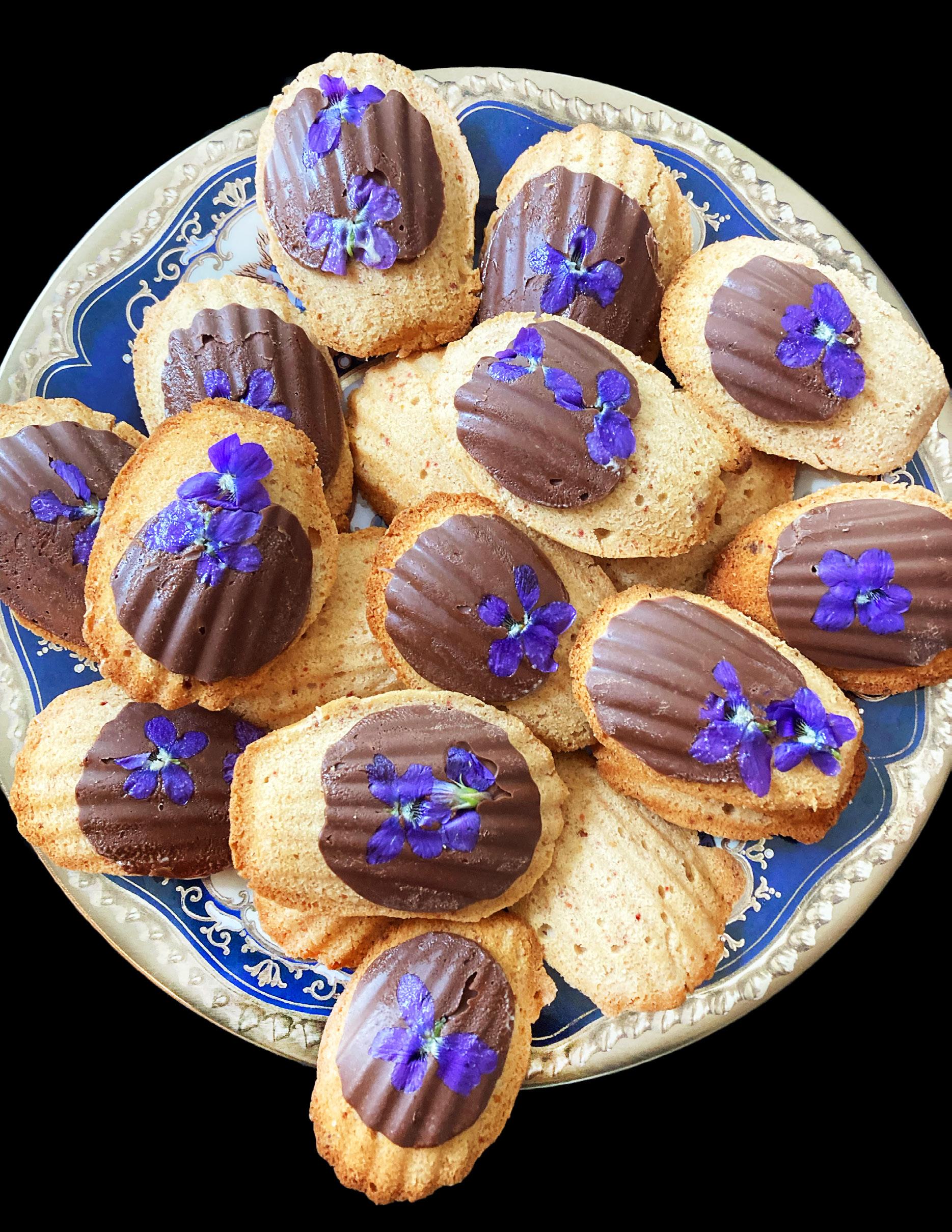
The Dos and Don’ts of Incorporating Flowers into Food
Words and Pictures by: Keira Tu
I can’t recall exactly when it began, but I have had a deep interest and passion for incorporating flowers into food that has spanned about a decade. My earliest memories of my interest are at Kew Gardens in London when I encountered a cookbook in the gift shop titled “Cooking with Flowers” which was written by Miche Bacher. She founded Mali B Sweets in Greenport, New York, a bakery that was known for its unique use of herbs and flowers in their treats. The book went through the different ways to incorporate flowers into food, particularly sweets. She detailed the usage of peonies, lavender, borage, roses, daylilies, dandelions, and more to make edible treats. The book opened up a whole new world of baking and cooking for me that was appealing both aesthetically and conceptually. A way of cooking and baking that would bypass a trip to the grocery store for a trip to the garden. As I became more comfortable, I began to venture from the book more and experiment with my own recipes and flavor pairings. Over the years of learning how to incorporate edible flowers into my food, I have had many successes and disappointments; here is my rose bud thorn for those experiences of learning how to work edible flowers into food.
The Roses
The first thing I ever remember making with flowers came from my cookbook. It was a recipe for dandelion muffins that I made for Mother’s Day which quickly became a staple. Thank goodness it was a rose and not a thorn. Had it not been a success, I’m not sure if I would have continued to kindle my passion for edible flowers. I remember walking through the neighborhood on a warm May morning collecting dandelions from neighbors’ yards in a large Ziploc, then washing them and removing their petals before mixing them into the batter. Disclaimer: please exercise caution in picking dandelions and other flowers that may be potentially sprayed with pesticides or other potentially harmful lawn treatments.
The process of plucking something seen as undesirable from my yard and turning it into a delicious baked good got me hooked on this concept. As I mixed the petals into the batter, watching it swallow these tiny yellow petals, it felt a bit wrong. I felt like I was defying the rules of nature by adding it to my food…but upon the first bite my doubts were quelled. The muffins were delicious, like Spring in baked form, however the flower flavor was hardly detectable. Dandelions lack strong flavor but are well complemented, as suggested in this muffin recipe, by honey, dried apricots, and almonds. For those looking to incorporate flowers into their food subtly, dandelions might be a good starter flower for you.
A little later on, I remember discovering nasturtiums. They sharply contrasted the more delicate dandelions with a distinct peppery flavor that really shone through in dishes. I grew a small patch of nasturtiums from seed on the side of my house that my brother and I would pick off and eat. They come in vibrant fiery colors: reds, oranges, and yellows and their leaves have a nice peppery kick as well, comparable to less bitter arugula. Nasturtiums work amazingly in savory dishes, which sets them apart from most edible flowers. They make a nice addition to a crisp lemony salad as well as whipped into cream cheese for a bit of spice. They also serve as a beautiful garnish for soups, charcuterie boards, or whatever else strikes your fancy.

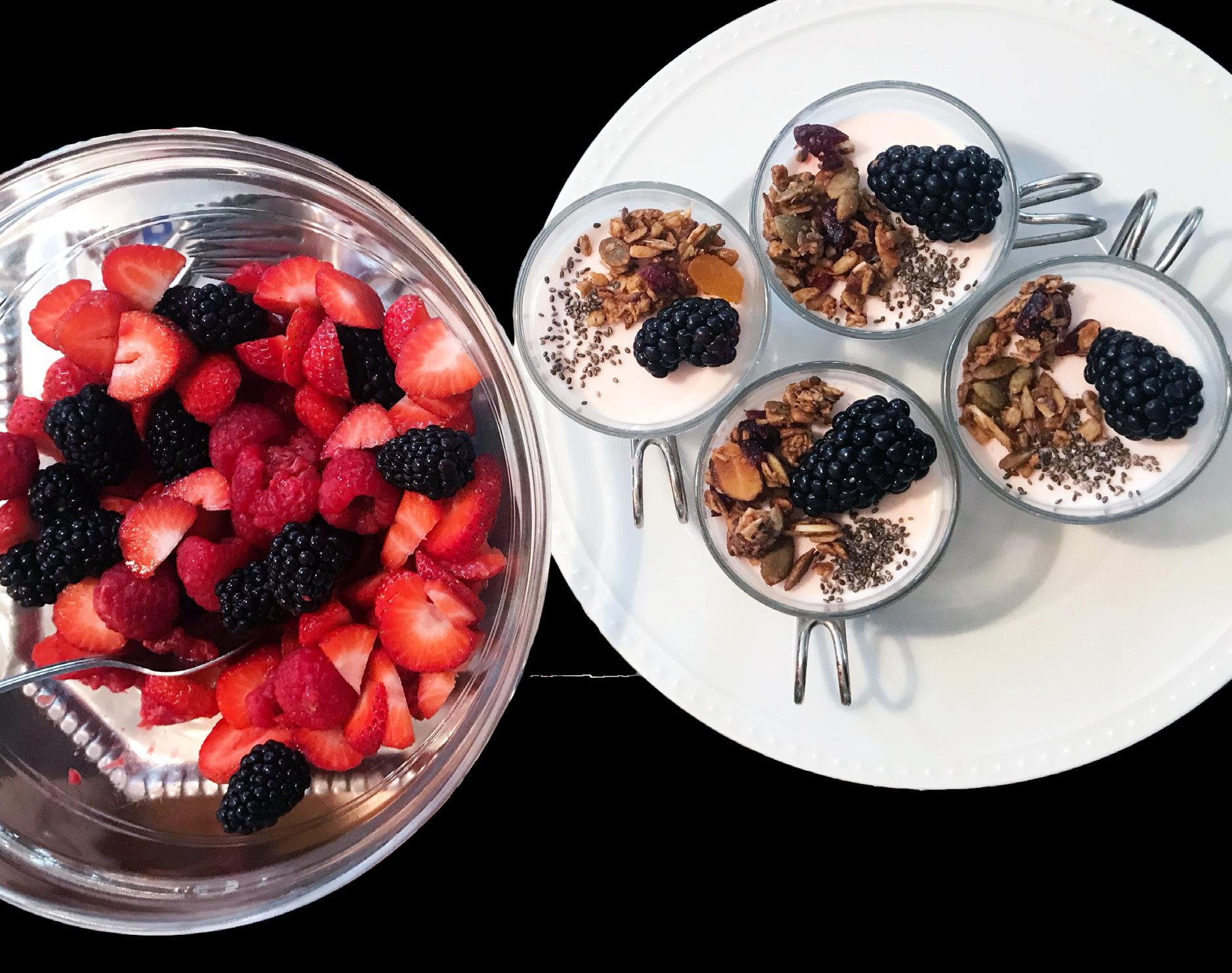
deeper roots of the practice with rose and orange blossom flavored products. I am a big fan of rose jam. It pairs nicely with soft cheeses or in lattes and matchas. I’ve used fresh rose petals in cream cheese similar to the addition of nasturtium flowers although in the sweet category. Roses are always my go to edible flower for a nice addition of flavor, texture, and of course decoration as a bright pop of pink on cakes. My sweet Nainai caught wind of my love for flowers and once shipped me dried rose buds and butterfly flowers. While both make delicious teas when steeped in hot water, I have also loved using them to make floral syrups for drinks. When rosemary and the dried rose buds are combined, the resulting flavor is complex and delicious. For coffee lovers, the marriage of the floral rose and earthy rosemary flavors makes a delicious pairing with espresso.
Many cultures have ties to edible flowers, and another great example is the use of hibiscus flowers in Mexican cuisine. Many Mexican restaurants have a big drink cooler of dark pink-purple agua de jamaica or simply “jamaica”, a drink made from sweetened iced hibiscus flower tea. It has great acidity and flavor that makes for a refreshing beverage to complement warm and spicy Mexican flavors. In my opinion, hibiscus and nasturtiums are the best flowers for flavor: unique, different, and flavorful. Hibiscus adds complex flavor to the dish in addition to its aesthetic element. In Mexican/Hispanic grocery stores you can often buy a bag of dried hibiscus flowers for jamaica if you want to recreate the drink at home. There is similar savory usage of flowers in Mexican cuisine using flor de calabaza or squash blossom. They are often used in two types of dishes, the first being stuffed squash blossoms which are commonly filled with cheese and lightly battered, and the second being inside quesadillas opposed to a form of protein. They are simple but delicious, containing only cheese and squash blossoms. I had these at a quesadilla stand in Coyoacan Market in Mexico City. The squash blossoms don’t have a strong flavor but impart a fresh texture and subtle squash taste in complement to the hearty corn tortilla and decadent melted cheese.
So there’s the rosy picture of my experiences with edible flowers. Now, here are some of the “thorns” if you will.
The Thorns
Not every flower tastes good. In my opinion, not even all the ones promoted by my edible flower bible were worth incorporating into food. At first I was lost in the excitement of the fact that you can eat all of these common flowers. But, once that novelty wore off, I quickly realized that some flowers simply should not be eaten, should be reserved solely for decoration or have been picked at the wrong time. Flowers, much like fruit, have a window of deliciousness. This was a lesson I learned through elderflowers. My family had been on a road trip and we pulled off at a scenic spot where there were elderflowers. I was so excited. I had never had these delicacies before, with the exception of an elderflower syrup purchased from IKEA. These were wild elderflowers, a totally new and exciting thing. After checking into our hotel at nearly midnight, I quickly started a kettle of tea, determined to try this elderflower that very night. I waited patiently as the water boiled, then again as I poured the tea over the fine, cream colored elderflower. Once it had taken on a slight color, I was ready to sample. It had been just about all I thought about that day, carefully placing it between my brother and I on the middle seat throughout the drive. I took a sip and it was bad. Immediately pungent and unpleasant. It didn’t warrant more than a second sip of confirmation for me to decide to pour my labor of love down the sink along with my dreams of a deliciously floral wild elderflower tea. Upon further research, I learned that if not harvested within the proper window, or after a lot of rain, elderflowers take on an unpleasant smell and taste, and while they are still technically edible, are not worth foraging for.
My other thorn is also related to a foraging mishap, although I’m afraid this one is a little bit more of a personal error. I was in elementary school and as an open ended history project, I decided that I was going to make violet pudding for my class. We were learning about Medieval history and I had somehow related that unit to violet pudding in a pitch to my teacher (I was clearly obsessed). While my brother played a soccer game, I wandered the fields with a gallon Ziploc bag picking violets for my pudding.







They were abundant at this particular field, however I had to collect a whole 6 cups of violets for my pudding. After much time had passed, I began to lazily pick the violets by open handfuls. Suddenly, my progress was a lot quicker. The only problem was that the violet flowers were about the height of grass and I could see some touches of green as I looked in my bag. But it was fine, I told myself. I would pick it out later. Except, washing the petals at home was a nightmarish process. Nothing became clean in the process as the flowers all stuck together making it impossible to remove the grass that had made its way into my violet collection. Some grass pieces were picked out, but it became evident that they were not coming out. I decided at this moment that it was fine, there wasn’t that much grass in there. The bag was mostly purple anyways. I had to do this project and this was the supply I had.
So I made my lovely violet pudding, and as I gave



The Buds
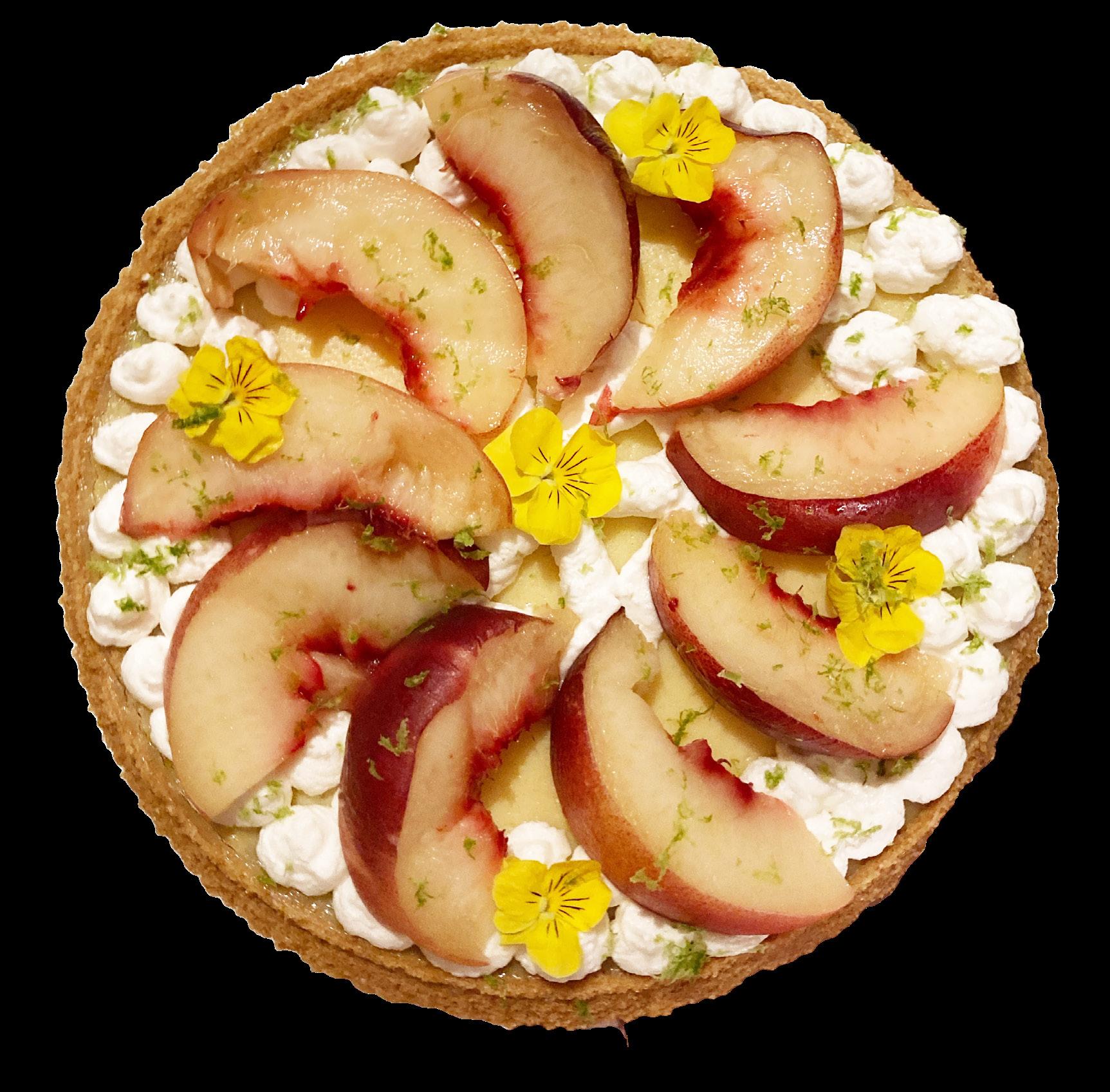
still love to incorporate flowers whenever possible, especially when they can be sourced from a garden. I also have many flowers I would love to work more with. At the top of my list is sakura or cherry blossoms. They contain toxic compounds, but they can be treated by curing in salt then vinegar pickling. These flowers are not only beautiful, but are also described to have a delicate floral flavor with slight saltiness from the pickling process as well as hints of cherry. This flavor is definitely growing in popularity with sakura matcha, candy, ice cream, and tea all over social media. You can purchase the flowers off of Amazon making it easy to use a simple syrup as a starting point by simply boiling the petals in water with sugar. I would love to make a matcha cake with sakura frosting because the earthy flavors present in matcha pair well with floral flavors, as I talked about earlier with the pairing of rose and rosemary. I think sakura mochi would also be a super fun project as well. Working with edible flowers is an ongoing process and I always love learning more and tweaking recipes. I am always trying to move away from using flowers just to say I used them without the flowers really shining through in my food. I think that’s the biggest criticism I have heard from people about the use of edible flowers, the issue that nobody can actually pick up that flavor right off the bat (I’m looking at you Starbucks lavender matcha) but the idea draws them to it every time. However, when flowers are included with intention, they can really be the cherry on top, bringing unique flavors with a pop of color for a fresh take on food.
Flour Bakeries
Words by: Margaret Kuffner and Sydney Luciano
Pictures by: Colleen Fogarty
Many people consider Boston the running capital of the world. The routes are endless, the Charles River is a pristine, perfect spot, and who could forget about the notorious Heartbreak Hill and the Boston Marathon finish line? Our love for running is just as deep as our passion for food—so why not combine the two?
Running is a source of joy for both of us, a way to explore this endlessly historic city, and an escape from the stress of homework, exams, and the BC bubble. Although running is often seen as an individual, self-focused activity, it’s honestly best done with someone else. As members of the Boston College Club Running Team, we’ve learned how important it is to work together to get through grueling workouts and tough races—and how amazing it is to share the challenges and triumphs of a sport built on grit.
Currently, we’re both training for different marathons just two days apart. Margaret has a bib for Boston, and Sydney will be running in picturesque Newport. Running 26.2 miles is no easy task. It’s daunting, full of challenges, and takes dedication, resilience, and a whole lot of confidence to get through. But with friends by your side during training, it becomes so much easier. Finding fun ways to incorporate other passions—like food—into running makes it all the more enjoyable (and delicious).
Following an early wake-up on a brisk Saturday morning, we met by the corner of St. Ignatius Church, prepared for a long training run filled with lots of treats. We had two goals: run 17 miles and visit every single Flour Bakery in Boston.
Over the years, Flour has become a Boston staple, with nine locations popping up across the city. The original opened in the South End in 2000. Award-winning pastry chef Joanne Chang started the bakery in hopes of making the world a sweeter place—and our run definitely became sweeter because of it.
Starting at Boston College, we headed down the pristine Charles River into Cambridge for our first stop. After our longest continuous stretch, we neared the five-mile mark and the first location. Reaching the first pit stop filled us with excitement—it felt like our journey was truly beginning. We stopped and smelled the gooey sticky buns, but knew this was just the beginning.
The next stops felt like they were just around the corner—there were two more Flour locations in Cambridge alone. The second one was more modern, but featured the classic Flour logo. Slick outlines of cracked eggs surrounded the all-glass exterior. We peeked in at the monstrous pastry case, waiting just a couple more miles before indulging in a much-deserved treat.
As we ran farther into Cambridge to the third location, there was no doubt we had arrived. The front wall was covered in massive 10-foot windows, with the Flour name printed across them and an egg for the “o.” Inside, we found our favorite decoration: a sign that read “eggcellent things await” paired with the cutest whisk and egg decal. It turned out to be true—this was the beginning of what would become our favorite run together.



From there, we headed toward the West End behind Beacon Hill to a Flour location familiar to Margaret. As a clinical researcher at Mass General Hospital, she often stops by this Flour for a pick-me-up treat after the long T ride from BC. Her go-to is a hot vanilla latte with either the North Country Applewood-smoked bacon sandwich—complete with perfectly poached eggs, a sun-dried tomato crème, and fluffy yet crisp focaccia—or a decadent layered croissant that melts in your mouth with every bite. While we would have loved the sandwich, the croissant was the perfect snack and fuel for the remaining nine miles.
We then ran through the older part of downtown Boston, carefully placing our feet on the Freedom Trail’s cobblestones and admiring historic sights like the Granary Burying Ground, Old State House, and eventually, the site of the Boston Tea Party. At this point, the reality of a long run really set in. We were over 10 miles in, yet still had so far to go—it made us question everything. But we stayed dedicated, excited to visit the final three Flour locations and complete our remaining seven miles.
The next Flour was in a part of the Seaport we had never explored—an industrial park full of offices and workspaces. This was obvious, as that Flour location is only open Monday through Friday. Water would’ve been nice at this point, but we pushed on toward the final stop, 14 miles into our run. We were smiling ear to ear and eager to try another scrumptious treat before finishing the last three miles. We refueled with what we both agreed was the best banana bread we’ve ever had: a thick, moist slice baked to perfection, with crisp and aromatic walnuts adding wonderful complexity. After a few bites and some refreshing water, we hit the road again—fueled and satisfied with our journey so far.
Though the last two miles were definitely a struggle—our legs sore and tired—we were so grateful to have completed the journey together. The cold wind off the coast and the brisk winter chill weren’t enough to bring our joy down. Each Flour location was unique in design and atmosphere. Our favorite was definitely the third stop, with the giant egg “o” decal. Some bakeries were cozy, like the last one with large chairs and dim lighting; others were more business-like, with sleek glass walls and counter stools. Sitting down and devouring treats was tempting at every stop, so we both hope to return— on fresher legs. Who knows? Maybe after our marathons, we’ll reward ourselves with another Flour adventure.
Flour Bakery is compelling not only because of its incredible products but also because of the story behind them. Joanne Chang is an inspiration—especially for college students. She graduated from Harvard with a degree in Applied Mathematics and Economics but ultimately left her career path to follow her dreams and become a chef. With hard work and determination, she and her husband were able to open all nine Flour bakeries—a story of success, passion, and grit.
Just as running has taught us perseverance and dedication, Chang’s story is a powerful reminder to follow your passions. Though we aren’t going to be professional athletes, we both see running in our futures. It’s so important to find what you love and create space for it in your life. We’re at different points—Margaret finishing her final semester at BC, and Sydney wrapping up her second year—but this experience has given us lessons we’ll carry with us forever. Like running and baking, life has its ups and downs. But doing what you love can make the hard parts more manageable—and even enjoyable. Flour is a place to start that joy—with a running partner and some fun goals in mind.

Farm-to-Table Gardening
Written by: Ruby Levine
Pictures by: Ruby Levine & Kate Johnston
Farm-to-table gardening is more than just a method of growing food, it is a way of life that fosters connection, creativity, and a great appreciation for fresh ingredients. For me, it has always been deeply personal, rooted in the time I have spent gardening with my dad. From an early age, I learned about gardening and caring for plants, watching them grow, and appreciating the patience and effort that goes into producing food from the soil. Our backyard garden has become a space where my dad experiments with different vegetables and edible flowers, bringing vibrant colors and flavors to our plates.
One of the most exciting aspects of our garden is the variety of edible flowers we grow. Nasturtiums, with their bright orange and red petals, add a peppery bite to salads and seafood dishes. Borage flowers, delicate and star-shaped, bring a refreshing, cucumber-like taste to summer meals. These flowers not only enhance the visual appeal of our dishes but also remind me of the time and care we put into growing them. A favorite memory of mine is picking flowers from the garden with my dad. The experience of selecting the perfect ones, carefully plucking them, and imagining how they will complement our meals has always felt like a creative process. It is rewarding to see how the ingredients we grew together can be transformed into something delicious.
One of our most beautiful dishes made was a simple yet flavorful plate made with sungold tomatoes, shishito peppers, and Borage flowers. The Sungold tomatoes, bursting with sweetness, paired perfectly with the mild heat of the shishito peppers, while the Borage flowers added a crisp, cooling note. Seeing the bright orange and yellow hues of the tomatoes alongside the deep green peppers and the soft blue of the Borage flowers reminded me of why we love growing our own food—it is as much about the beauty as it is about the taste. Another unforgettable meal featured fish that my dad caught down the street from our house, served with Sungold tomatoes and Nasturtiums from our garden. The combination of freshly caught fish with the homegrown flavors of our garden made the meal feel especially meaningful. The Nasturtiums, both spicy and slightly sweet, balanced the taste of the fish and added a touch of pepper to the dish.
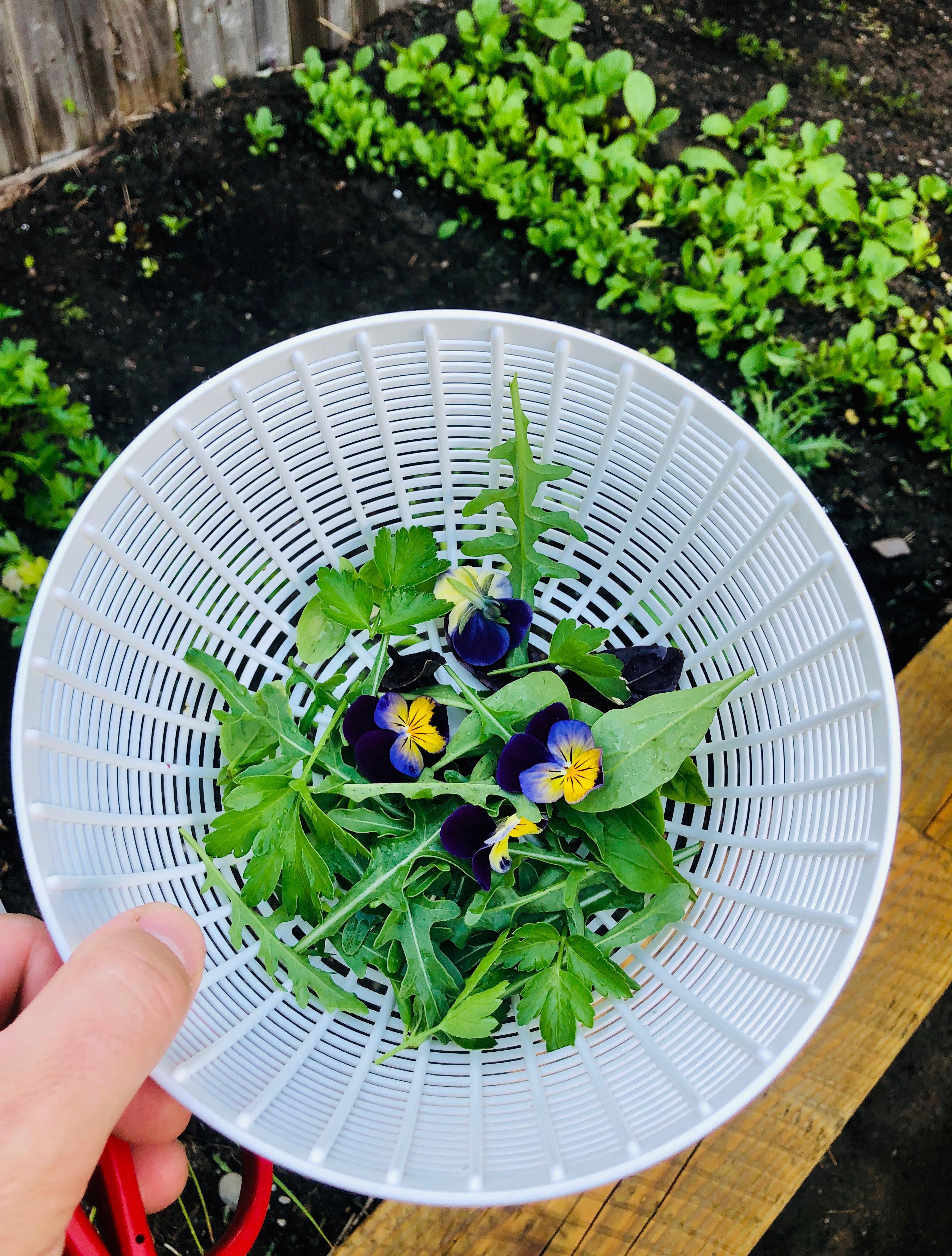
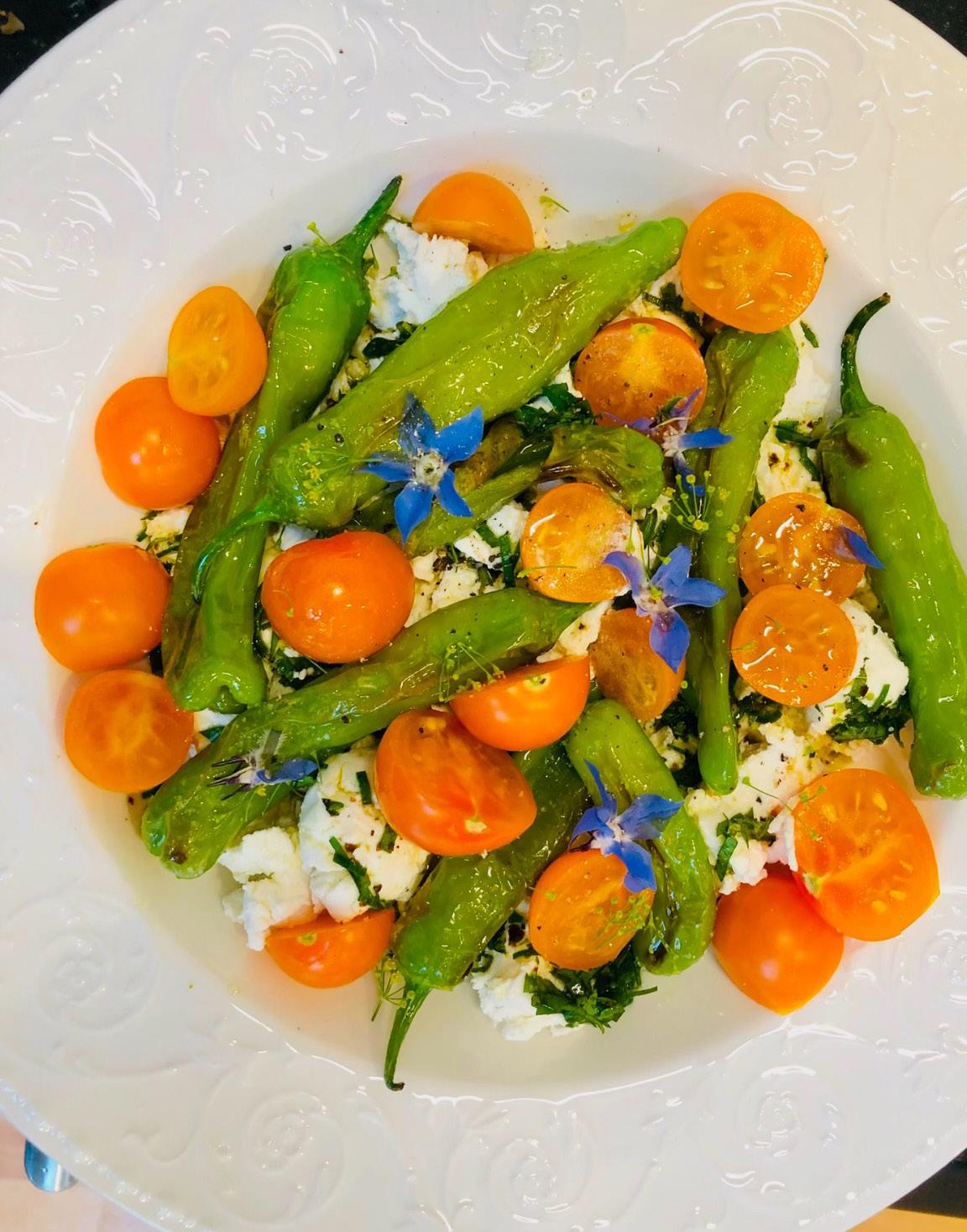




The Flourless Road
Words and Pictures by: Alyssa Turay

I have always believed that the most magical part of baking is the way it brings people together. Ever since I was a little girl, standing on my tiptoes to reach the mixing bowl, I found solace in the rhythm of whisking batter and the intoxicating scent of cookies wafting through the kitchen. My love for baking wasn’t just about the sweets themselves; it was about the joy, the tradition, the connection. My cookie recipe was generations of love mixed in with flour, sugar, and eggs.
I spent years perfecting my recipe, testing different ratios of brown sugar to white sugar, swapping butter for shortening, chilling the dough overnight, essentially experimenting with every little trick I could find. One thing never changed: my cookies were made with good old-fashioned all-purpose flour. It gave them structure, chewiness, and a golden-brown crispness at the edges.
Then, everything changed.
I had been dealing with persistent illnesses for months. At first, I thought it was just stress or an occasional sensitivity to certain foods, but as time passed, my symptoms became impossible to ignore. The fatigue and the discomfort escalated until I finally saw a doctor. After a series of tests, I got my answer: a gluten allergy.
The diagnosis hit me like a ton of bricks. Gluten? The backbone of my baking? The foundation of my beloved cookies? I couldn’t believe it. At first, I mourned the loss of my old life and my old ingredients. It felt like I was losing a part of my identity. After some time, I decided to take on the challenge head-on. If I couldn’t have gluten, I would learn how to bake without it.


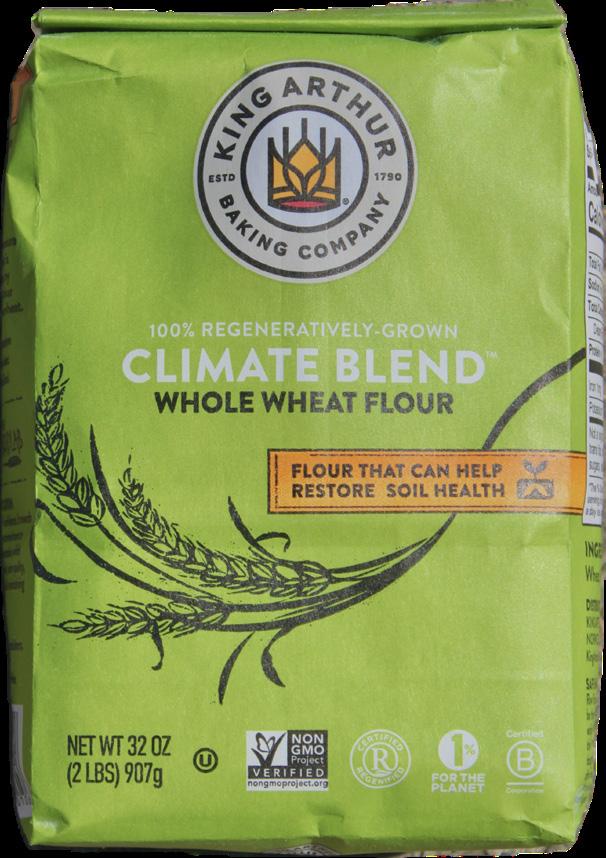
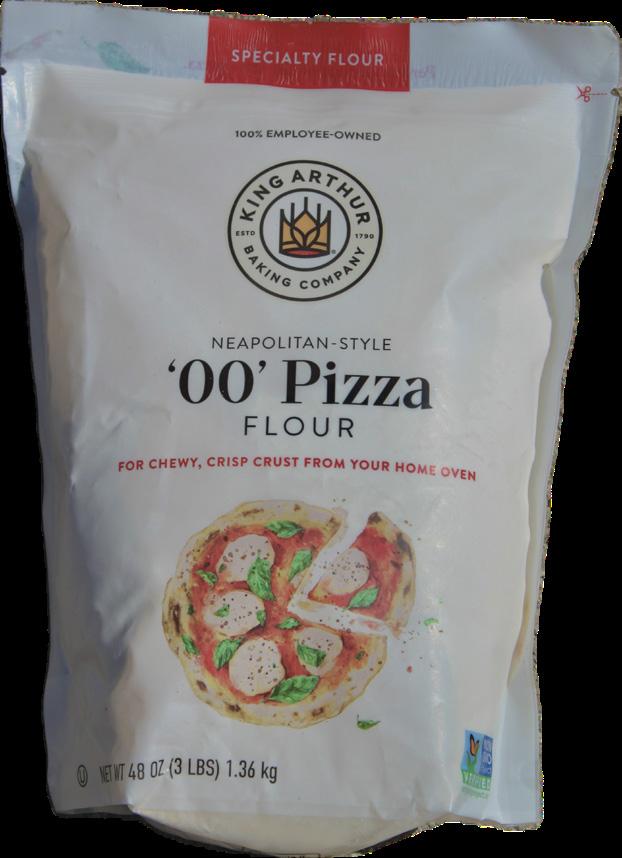
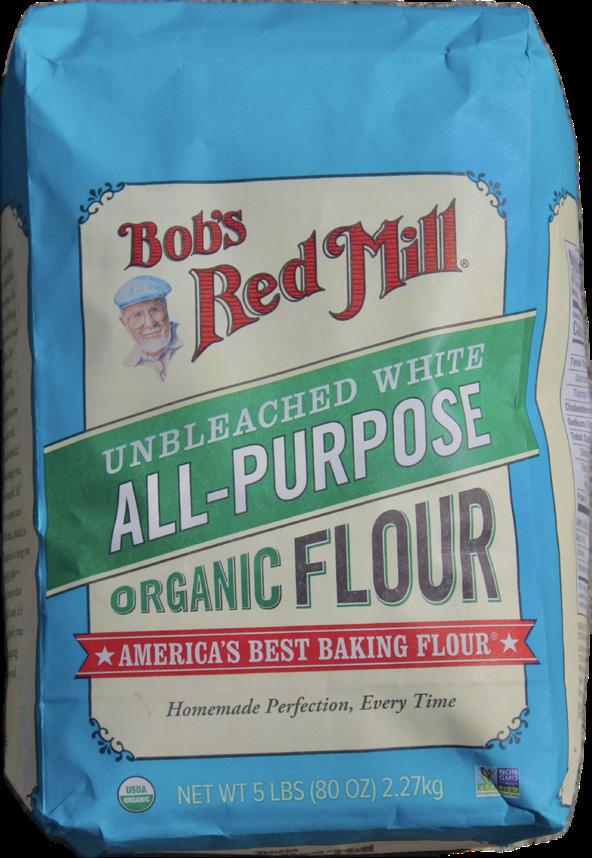
My first attempt at gluten-free cookies was a disaster. I had assumed I could simply swap my all-purpose flour for a one-to-one gluten-free blend and call it a day. However the cookies spread too much, or not enough. They were either too dry or too dense, missing the delicate chew I had worked so hard to achieve over the years. I needed to understand the chemistry of flour in a way I never had before.
So, I dove deep into research.
I learned that wheat flour isn’t just an ingredient, it’s a complex network of proteins and starches that create structure and elasticity. Without gluten, there was nothing to hold my cookies together in quite the same way. I experimented with different blends, trying rice flour, almond flour, oat flour, tapioca starch, and even sorghum. Each one had its own personality, its own quirks. Some made my cookies sandy and crumbly, others turned them into flat pancakes.
Almond flour intrigued me. It gave my cookies a rich, nutty flavor and a tender crumb, but it lacked the structure I needed. Adding tapioca starch helped a little, but the cookies still weren’t right. Then, I tried a combination of oat flour and brown rice flour. The oat flour brought a subtle chewiness, while the brown rice flour added enough body to prevent the cookies from falling apart.
Something was still missing.
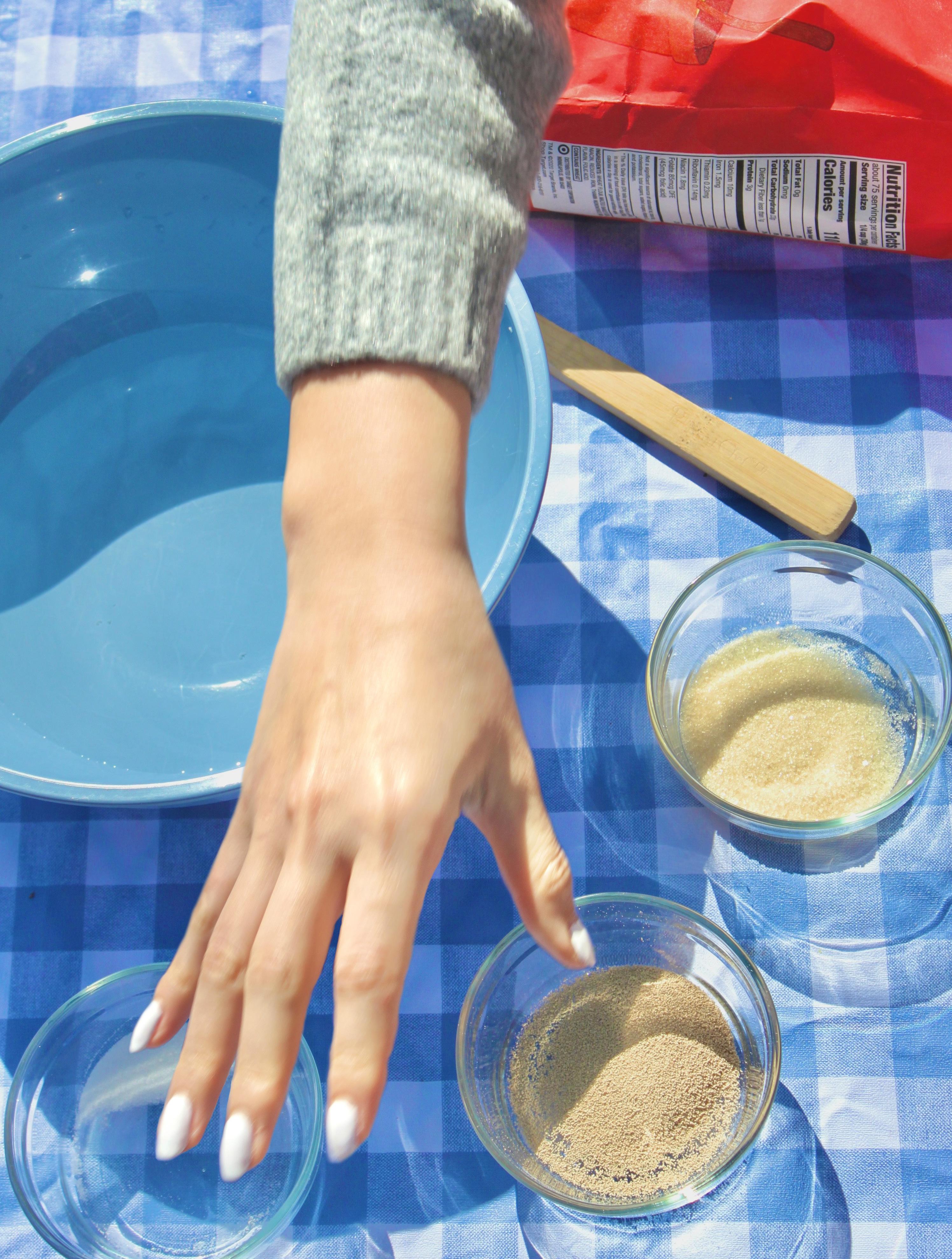

I realized that gluten-free flours absorb moisture differently, meaning I had to adjust my liquid ingredients. Adding an extra egg yolk brought richness and cohesion, while a bit of xanthan gum mimicked the elasticity of gluten. And the chilling time? Even more crucial than before.
Batch after batch, I tweaked and tested, until one day, I took a bite and knew I had done it. The cookie was everything I had been searching for. Slightly crisp at the edges, perfectly chewy in the center, and packed with the familiar warmth of brown sugar and vanilla. It wasn’t just a good gluten-free cookie. It was a good cookie, period.
The first time I shared my new cookies with my family, I watched their faces carefully, waiting for the verdict. My dad, the most brutally honest food critic in the house, took a bite, chewed thoughtfully, and said, “I wouldn’t even know these were gluten-free if you hadn’t told me.”
That was the moment I knew I had reclaimed my place in the kitchen. My baking hadn’t been taken from me, it had simply evolved, and in the process, I had learned something invaluable: sometimes, the things we think define us are more flexible than we believe.
Now, when I bake my famous cookies, I do so with a deeper understanding of what goes into each ingredient. I appreciate the science behind the sweetness, the way a small adjustment can make all the difference. When I share them with others—whether they need to eat gluten-free or not—I know I’m not just giving them a cookie. I’m sharing a story, a journey, a reminder that change isn’t always the end of something. Sometimes, it’s just the beginning of something new.
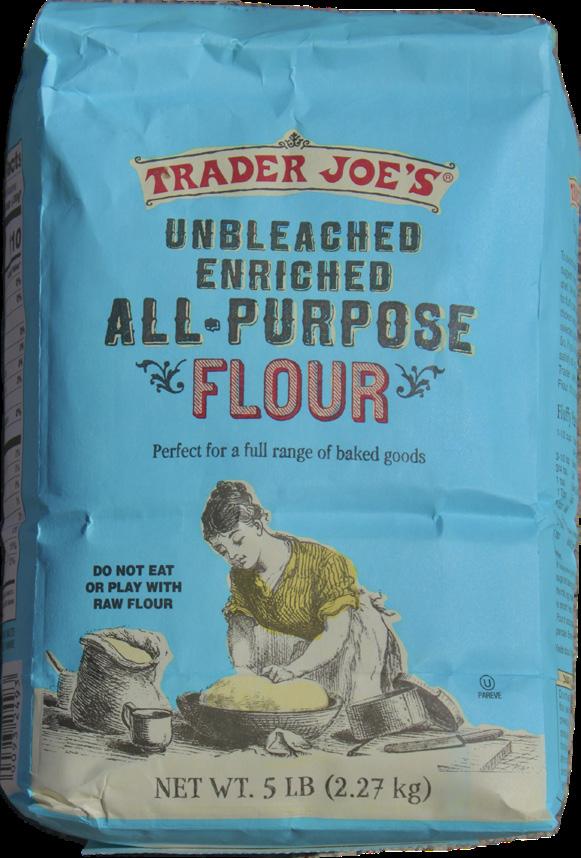


From Flower To Fruit
Words and graphics by: Katie Ballard
When we think of fruit, we often think of bright, ripe, ready-to-eat snacks. However, before we can enjoy our perfectly ripe fruit, it has to grow. In this process, many fruits start as a flower, then grow to become the fruit we know them as. Learn more popular fruits and the flowers that they start as below.

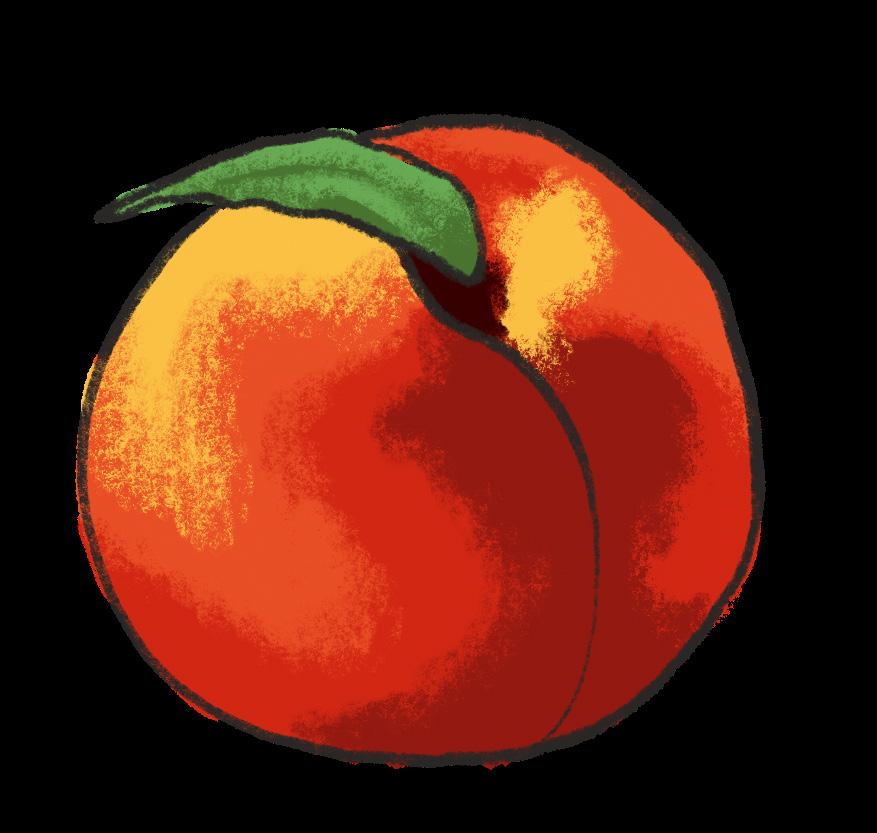



Tomato
Prunus persica
Solanum lycopersicum
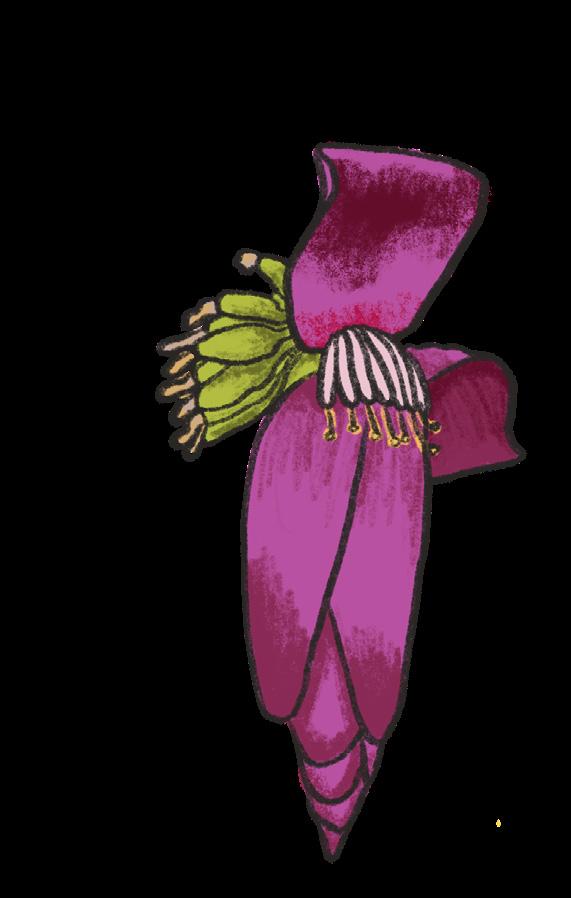

Banana Strawberry
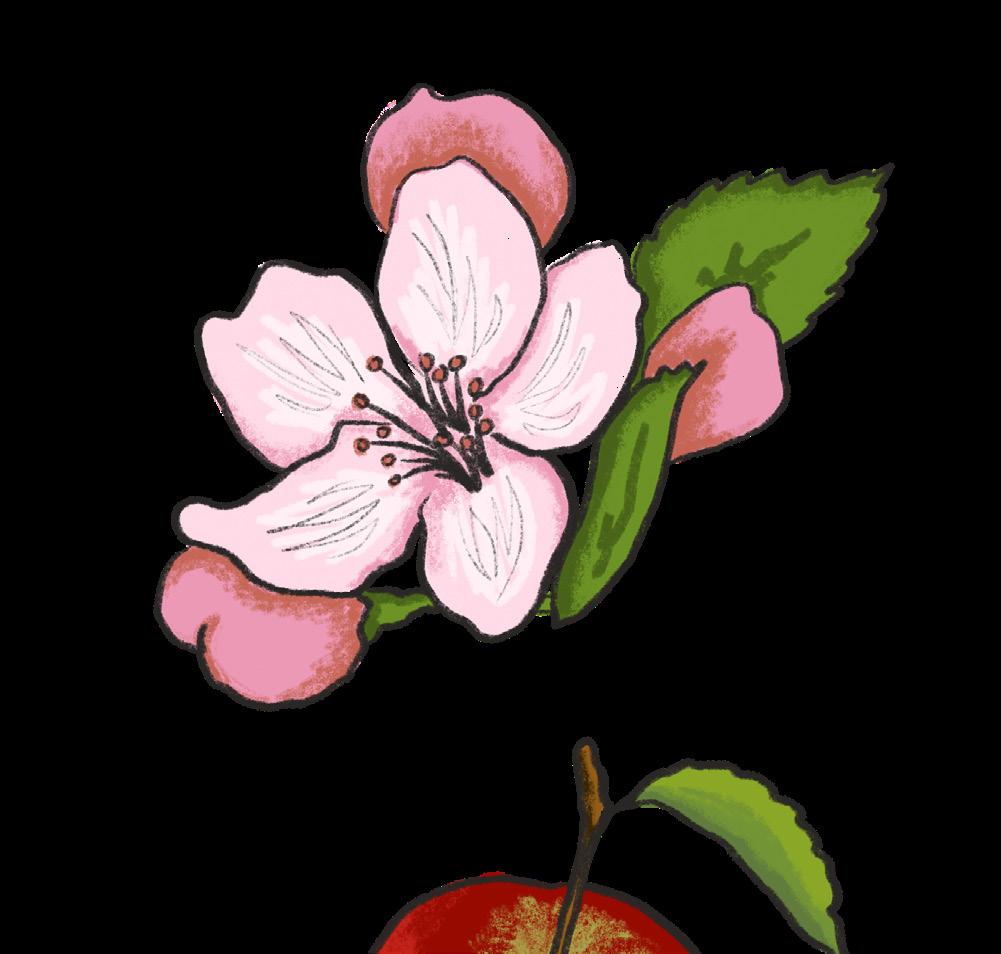


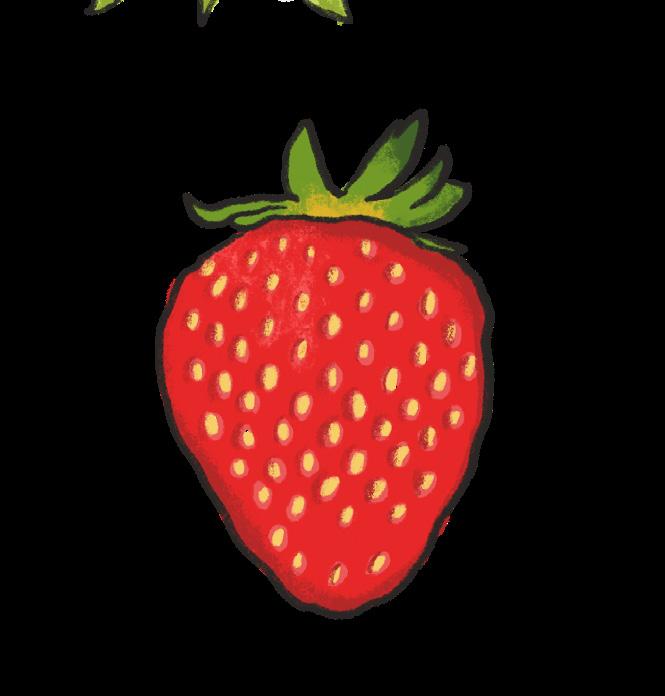

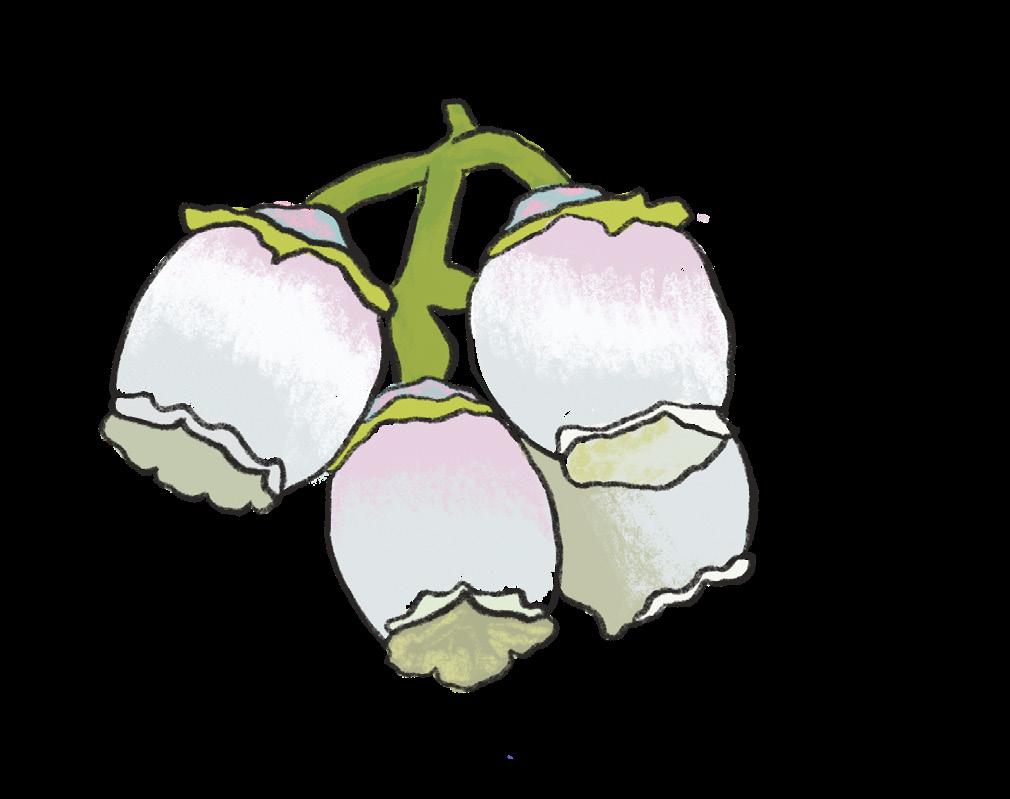

Apple
Blueberry
Musa
Fragaria × ananassa
Malus domestica
Vaccinium caesariense

'00' Flour
Words by: Katie Mangraviti
Pictures by: Katie Mangraviti & Colleen Fogarty
Graphics by: Katie Ballard
Growing up in an Italian-American household, I’ve spent countless dinners eating the staples: seafood, risotto, arancini, and of course, pizza and pasta. When I started learning how to cook and bake in middle school, I knew I wanted to learn how to make the foods that I loved the most. For me, learning how to make bread dough was at the top of my list. I watched countless YouTube videos where I learned about yeast and how it requires “activation” (which honestly still confuses me to this day) and how to best knead dough. Through my many trials in learning how to perfect dough for both pizza and pasta, there has been one common denominator between my most successful batches: the use of double zero flour.
Double zero flour is a soft, super fine flour from Italy that is essential to making authentic Italian

dough. What sets double zero flour apart from its alternatives is that it is milled at the at the finest grade to achieve a baby powder-like texture. There are different versions of double zero flour based on the gluten content. In stores, there are specific variations of double zero flour that are meant for pizza and others meant for pasta. The main difference between the variations is their gluten content; double zero flour that is best suited for pasta has a lower gluten content than the one purposed for pizza. Overall, both variations of double zero are distinct from the standard all-purpose flour due to their lower protein content (“What Is Double Zero Flour for Bread, Pizza, Pasta?”). Though double zero flour is a relatively obscure flour, you should be able to find it at most large-scale grocery stores near you and shouldn’t have to go to an Italian market to obtain it.

When making pasta, I’ve found that a combination of double zero flour and semolina makes the most silky and delicate noodles. The double zero flour gives the pasta a smooth texture, while the semolina provides the dough with a high gluten content and thus a stronger structure. This combination yields pasta with a perfect consistency to soak up the sauce that it’s in and an optimal level of chewiness. Pizza made with double zero flour is much less likely to tear because the flour is so fine; this makes double zero flour perfect for achieving a thin crust. A thin crust is my personal preference though, admittedly, I’ve struggled to achieve the thinness I desire!


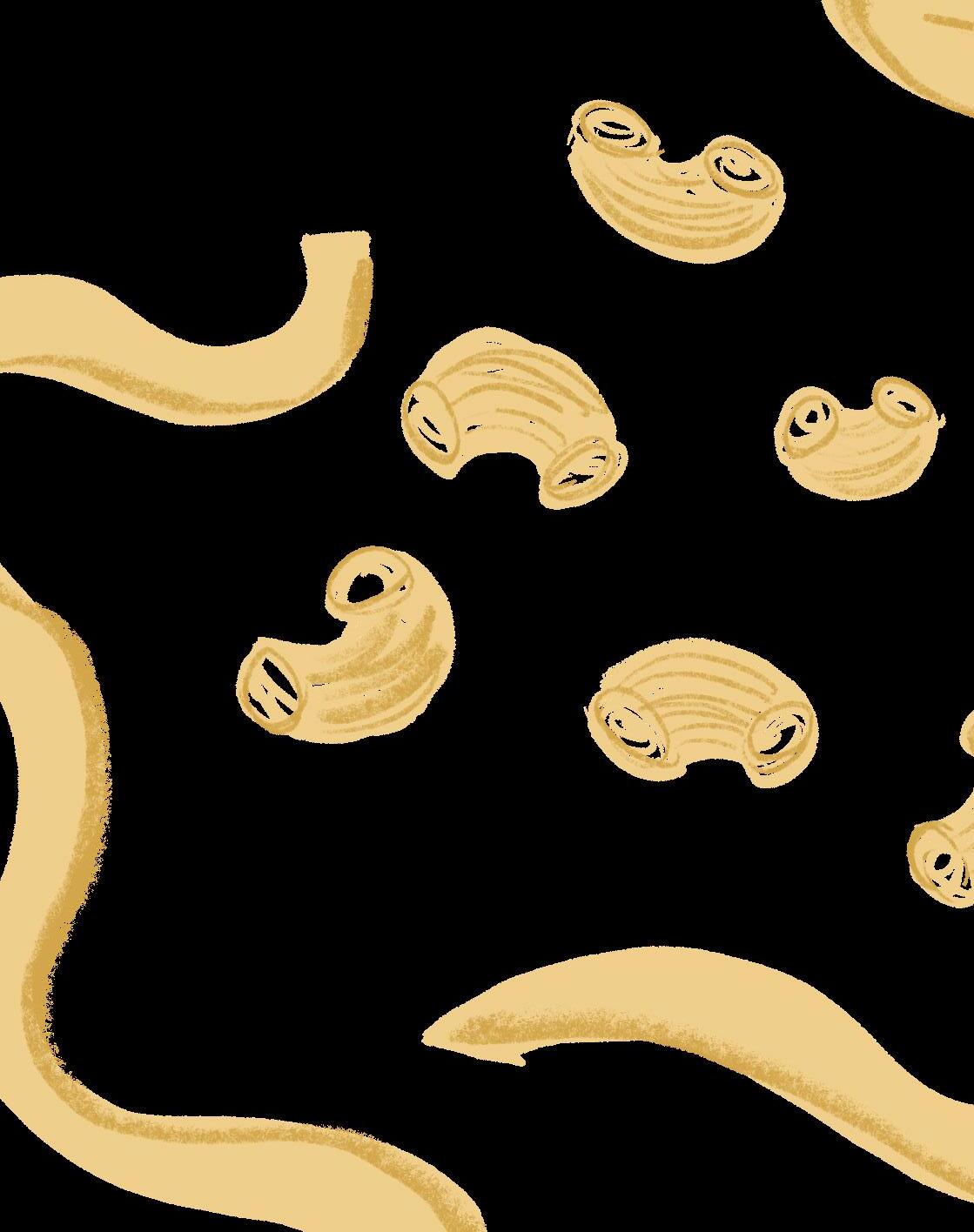
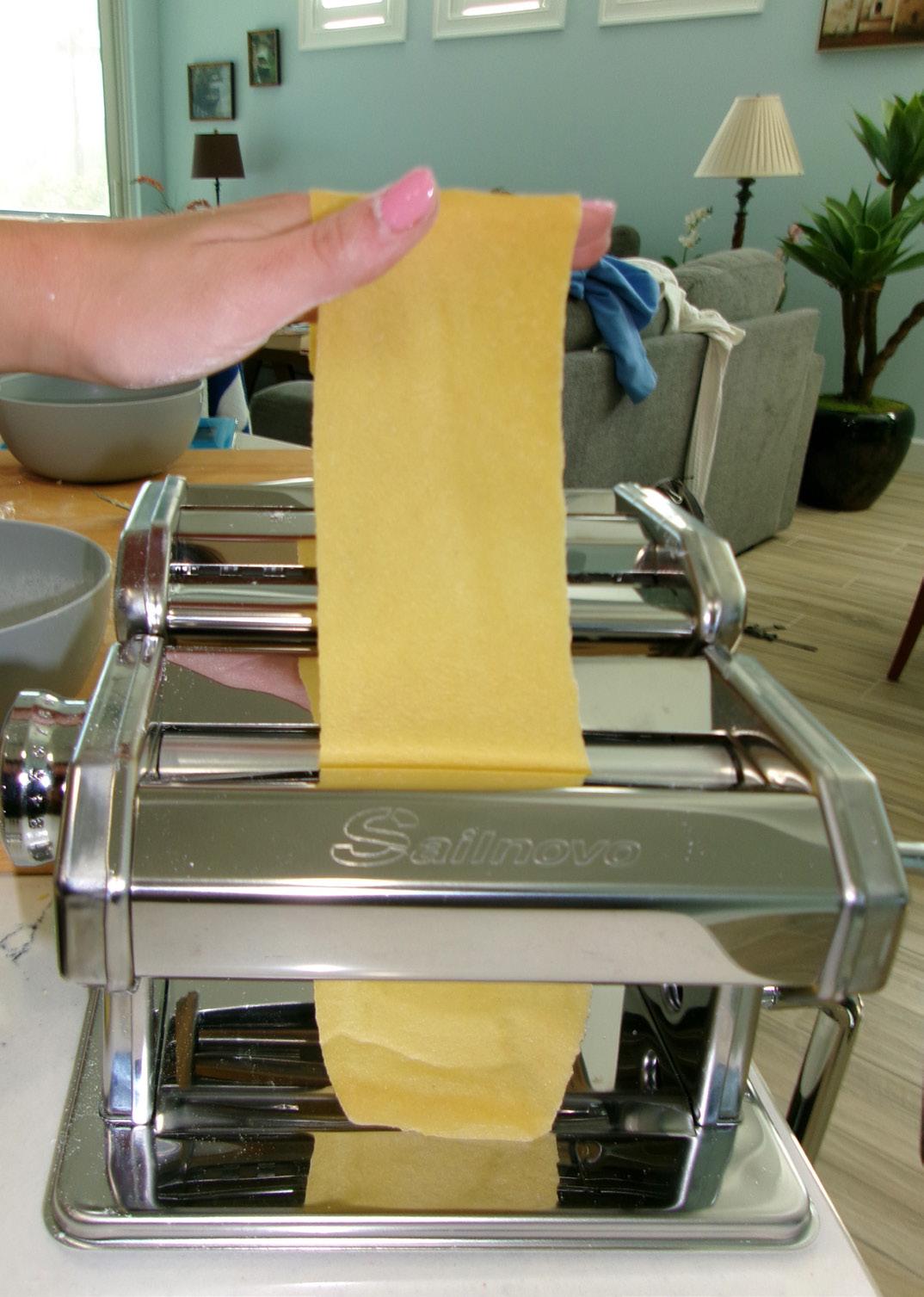
Some of my best memories from cooking have involved covering my clothes and (unfortunately for my parents) my kitchen with lots of flour. When I first learned how to make pizza back in middle school, I felt so accomplished because my dad, who, for context, is one of the pickiest eaters to ever sit at a dining room table, kept on asking me to make it again and again. I was thrilled to make the dough with my special double zero pizza flour, let it rise by the fireplace until it was bursting out of our pink bowl, and create pizzas that everyone would enjoy. As I’ve gotten older and become more of a pasta snob, I have embraced making pasta more instead of resorting to the boxed version. Whenever my mom wants to make bolognese or shrimp scampi, I’m quick to offer up my pasta-making services because it is so satisfying to me. I love putting my energy into rolling the finest and smoothest sheets of pasta and hand-cutting linguine or even pinching my own bow ties. Over the summer, my mom and I tried our hand at making a scamorza and zucchini ravioli that my mom tried in Venice and craved since. Our end-of-summer project was to bring this ravioli that she had back to life. I loved being able to work on a sentimental hands-on project together.

One thing I love about Italian cuisine is how much love and hard work goes into every meal. Struggling to roll out the perfect circle of thin pizza dough or to feed and crank pasta dough through our pasta maker on my own, is one way that I show my love and care to my friends and family. Whenever you have the time, I think that it is always worth it to dust your hands with flour, work with some dough to make something from scratch using high-quality, authentic ingredients. It is true that there is nothing more painful than rolling out and shaping the perfect circle of pizza dough just for it to thin out and break, but the challenge is all part of the fun. One of my claims to fame is never having used the dough hook attachment on my stand mixer because one of the most satisfying and exciting parts of cooking for me is getting to wrestle with the dough. Practice makes perfect, and I feel confident that with each circle of pizza and sheet of pasta I make, I get better at honing my craft. I know that double zero flour will remain a staple in my family’s kitchen as I continue to explore all that I can do with it while cooking for those that I love the most.
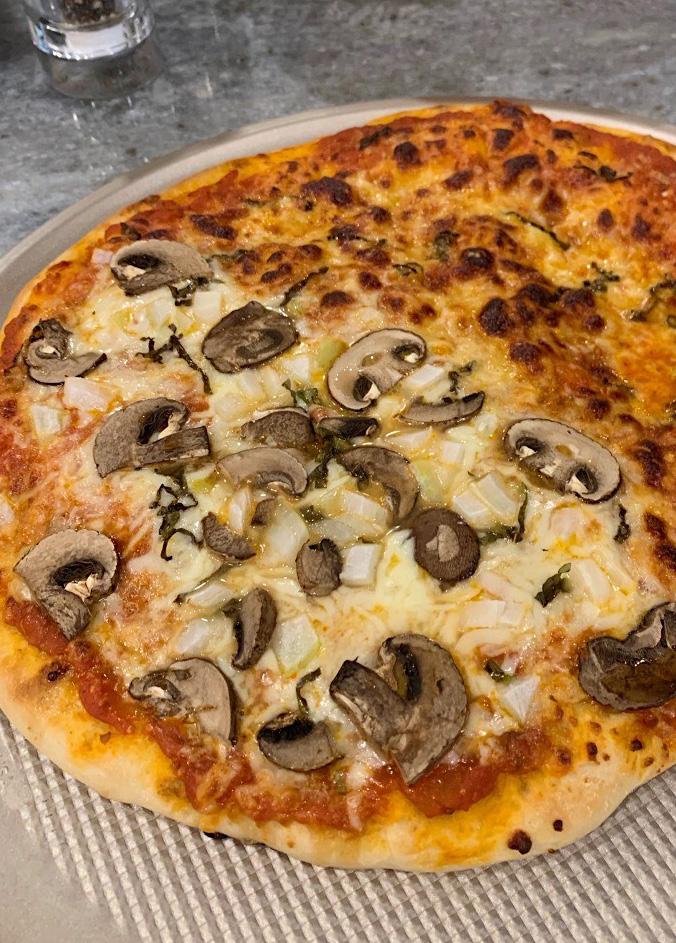
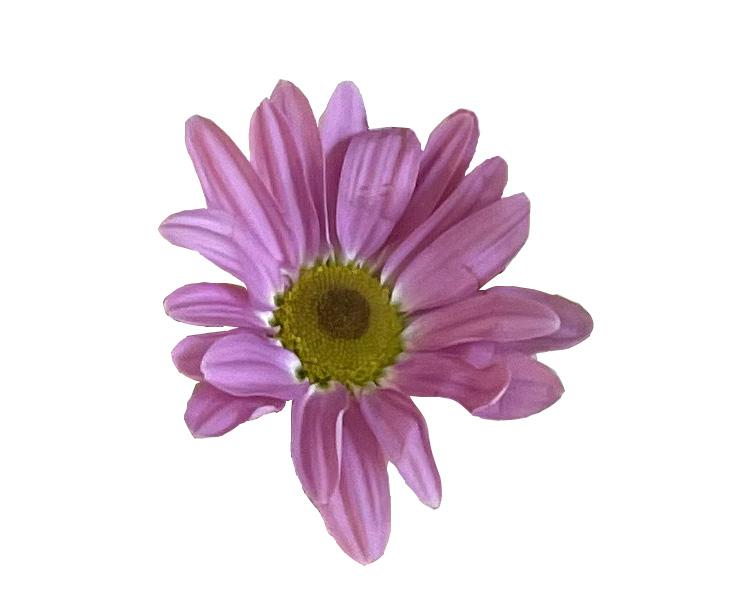
Blooming Into a New Chapter
Blooming Into a New Chapter
Words by: Julia Colone
Pictures by: Madeline McCormick & Julia Colone
I sit up in bed as Daffodil and Hyacinth-perfumed air wafts through my window. It’s the beginning of June and the morning of my graduation garden party. In just a few hours, I would transform my backyard from a makeshift dog park to an enchanted Narnia landscape. I envisioned a long table with Baby’s Breath practically bursting from the crevices of the wood planks, and Wisteria tickling the top of your head as you strolled through the
My mom’s voice shakes me from my mental vision board: “Julia! Get ready and come help down here!” We only have a little bit of time until the start of the celebration to complete the yard’s makeover. My peers and I are celebrating the end of an era. I feel a wave of nostalgia for the first time as I slip on a pink and orange dress with subtle Daisy outlines. I wander downstairs, experiencing an unfamiliar wash of joyful reminiscing and anxiety for the future. With college looming on the horizon, I would be leaving my friends, family, and any sense of normalcy behind.
I enter the kitchen where the counter is engulfed by what seems like thousands of bouquets. Pink Dahlias cascade between portions of greenery. Taller stems of Lavender jet out of the bouquets. Floral tablecloths line the table outside underneath candles and tiered trays with almond croissants and rhubarb coffee cake. My vision is becoming a reality, however I still can’t shake a lingering uneasy feeling. The grief that comes with graduation is taking over my mind; my vision board is crumbling under the weight of the memories that I’m struggling to hold close. My graduation garden party has a larger twinge of melancholy than I had imagined it would.

Quickly people filled my yard, trading stories about the past four years. I can feel my cheeks going rosy as Poppies from laughing. Finally, it’s time for cake. I ran inside to see it in its frosted, layered glory. A faint aroma hinted to me that lemon and poppy seeds hid behind the frosting’s front. Peering out the window at the diligently-decorated flower arrangements, inspiration strikes! I ask if we have any remaining purple or white Baby’s Breath. My mom brought over small scraps that made the perfect cake topper to complete my garden party and my high school experience.
As I look around with the aromatic cake in my hand, my internal tension starts to ease. What started as a simple theme developed into something much more. Just like the flowers around me, I too am blooming into the next stage of life.

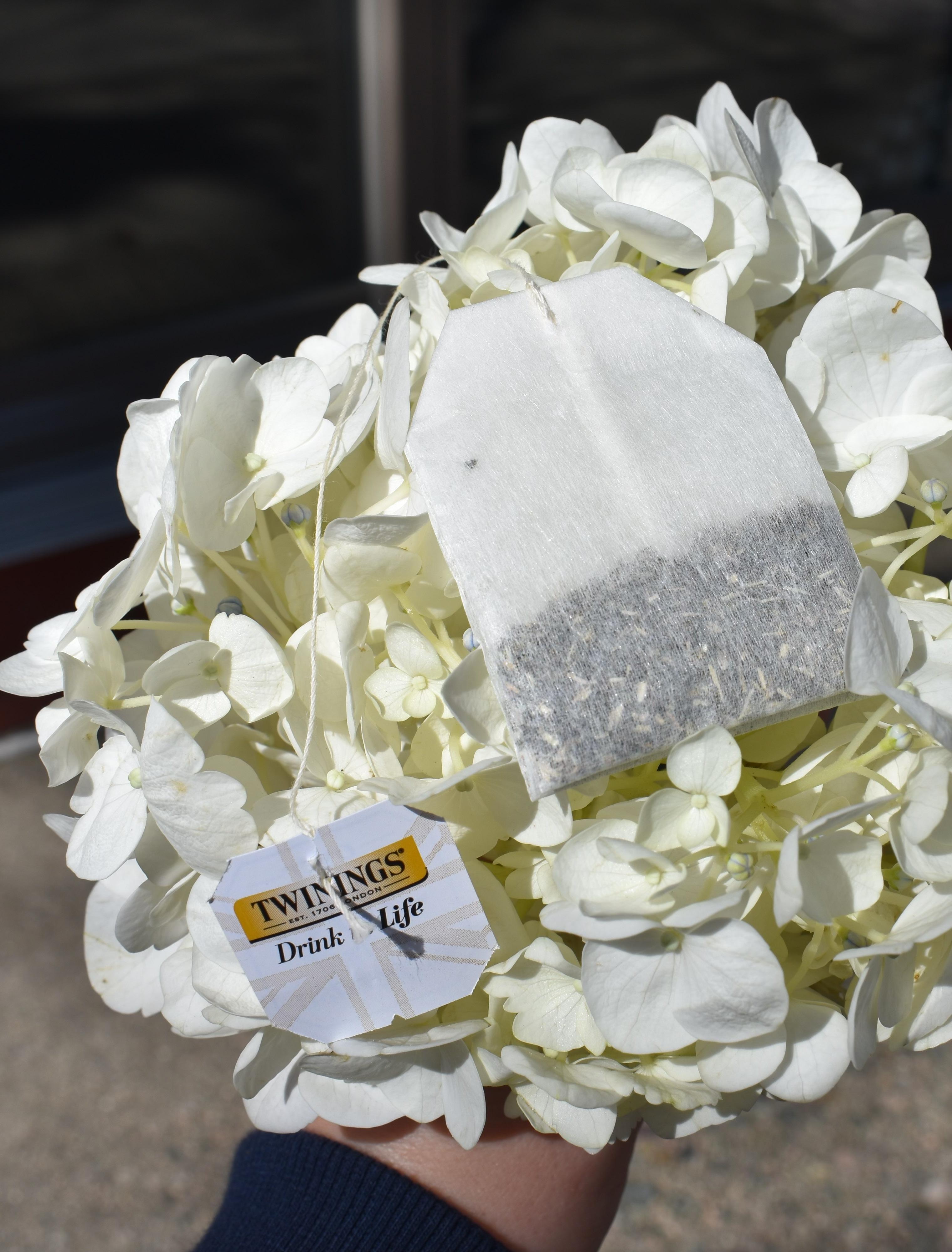
Petals in your Cup
Words by: Sydney Barrata
Pictures by: Madeline McCormick & Kate Johnston
Tea is the perfect accompaniment on a cold winter day if you’re looking for a warm mug to squeeze. Tea is the ideal beverage to refresh your palette in the peak summer heat. Tea can be sweet, fruity, spiced, calming, citrusy, floral or a complex combination. Spring demands that we discuss the bouquet of flavors that can be found in the floral category of teas. A beginner’s guide to drinking tea would not be a fitting title because no single article can capture all of its potential. Focusing on the colorful category, and my favorite, of florals, allows me to build the best picture of how you should decide your next brew! Flowers after all must be the prettiest thing you’ll ever drink.
I used to think tea was restricted to treatment for sore throats and the common cold, but that was before I realized it could be as versatile as coffee. Me and my roommates took it upon ourselves to become self-proclaimed tea aficionados over the past year. We went through dozens of flavors in iced and hot form, so I can confidently proclaim I am the girl for this job. We learned how to make a great cup of tea while getting to sip, gossip, and bond with each other. We got to be the old ladies we all wish we could be at our own Sunday tea parties. It became a routine, a moment of peace amidst the chaos of college life, and let me tell you, it made every study session or lazy afternoon feel a little bit more special. What started as a fun experiment turned into a ritual, and now, I can’t imagine a day without it. Throughout our tea journey, we learned the art of appreciating different tea leaves and flowers. Some teas are invigorating, while others are comforting, perfectly paired with cozy blankets and long conversations. Floral teas, in particular, stand out for their bright and fragrant qualities, each one offering its own unique twist on the traditional tea experience. Whether you’re sipping on jasmine to unwind, hibiscus to cool off, or chamomile to relax before bed, there’s a floral tea for every mood. They have the power to match whatever vibe you’re in.
What made me fall in love with floral teas is the range of flavors. The soft, almost sweet scent of rose tea can turn any evening into something a little more romantic, while the citrusy punch of orange blossom tea is a burst of sunshine on a dreary afternoon. Then there’s jasmine, with its delicate, elegant aroma that pairs perfectly with any quiet moment. I never realized how tea could be tied to a mood until I started experimenting. Now, instead of just reaching for any tea, I reach for one that fits exactly what I need—a little pick-meup, a calming moment, or just a burst of something fruity and fresh. Floral teas also make you feel like you’re treating yourself to something luxurious, even if it’s just a regular Tuesday. They’re the kind of drinks that make you stop for a second and appreciate the beauty of the moment. The colors, the fragrances, the taste—it all comes together to create a ritual that makes you feel like you’re doing something special for yourself. Who wouldn’t want a little self-care in a cup?
If you're looking for a tea that feels like a hug in a mug, jasmine is your go-to. Its sweet, floral fragrance is totally
calming and just the thing when you need to relax. It’s like a mini meditation session in tea form. Plus, it’s packed with antioxidants from the green tea base, so you can feel good about sipping it anytime. For a refreshing iced version, brew some jasmine green tea, let it cool, and then pour it over ice. Toss in a few fresh mint leaves and a slice of lemon, and you've got the perfect drink to sip on a sunny afternoon. The mint adds an extra kick, making it feel extra refreshing! However if you’re more in the mood for something cozy, just brew it hot and enjoy its delicate floral notes. No stress, just pure relaxation.
Rose tea is the ultimate comfort drink. It’s got that sweet, floral vibe that makes you feel like you’re in a lush garden, and it's perfect for those days when you need a little emotional pick-me-up. Rose is known for helping to calm your mind and digestive system, so it’s like a natural chill pill. One of my favorite ways to enjoy rose tea is by mixing it with some warm, spicy chai—think cinnamon, ginger, and cardamom. It’s a chai latte with a sweeter, more delicate twist. If you’re feeling fancy, a splash of vanilla and a little milk (or your favorite milk alternative) can make it a cozy treat that you can sip on all day.
Orange blossom tea is liquid sunshine. It has this beautiful citrusy fragrance that’s so uplifting. It’s perfect when you need to recharge, or if you’re just in the mood for something light and refreshing. It’s also amazing for relaxing and promoting a good night’s sleep. For a fun twist, try making it iced with a little fresh ginger. The ginger adds a zesty kick to the sweet orange blossom, making it an energizing combo that’s perfect for a summer cool down. If you’re looking to warm up instead, try adding honey and lemon. Hot or cold, it’s a beautiful and refreshing drink.
Hibiscus tea is not only gorgeous with its deep ruby color, but it also packs a flavor punch. It’s super tangy and refreshing, and it’s loaded with antioxidants—great for boosting your immune system and keeping your heart healthy. It’s a burst of energy and perfect for when you need to feel refreshed. If you’re craving something ice-cold and tart, steep hibiscus tea in boiling water, let it cool, and then serve it over ice with a squeeze of lime. Want a fizzy twist? Top it with some sparkling water for a bubbly finish. Hibiscus is perfect for hot days or whenever you need something bold and flavorful.
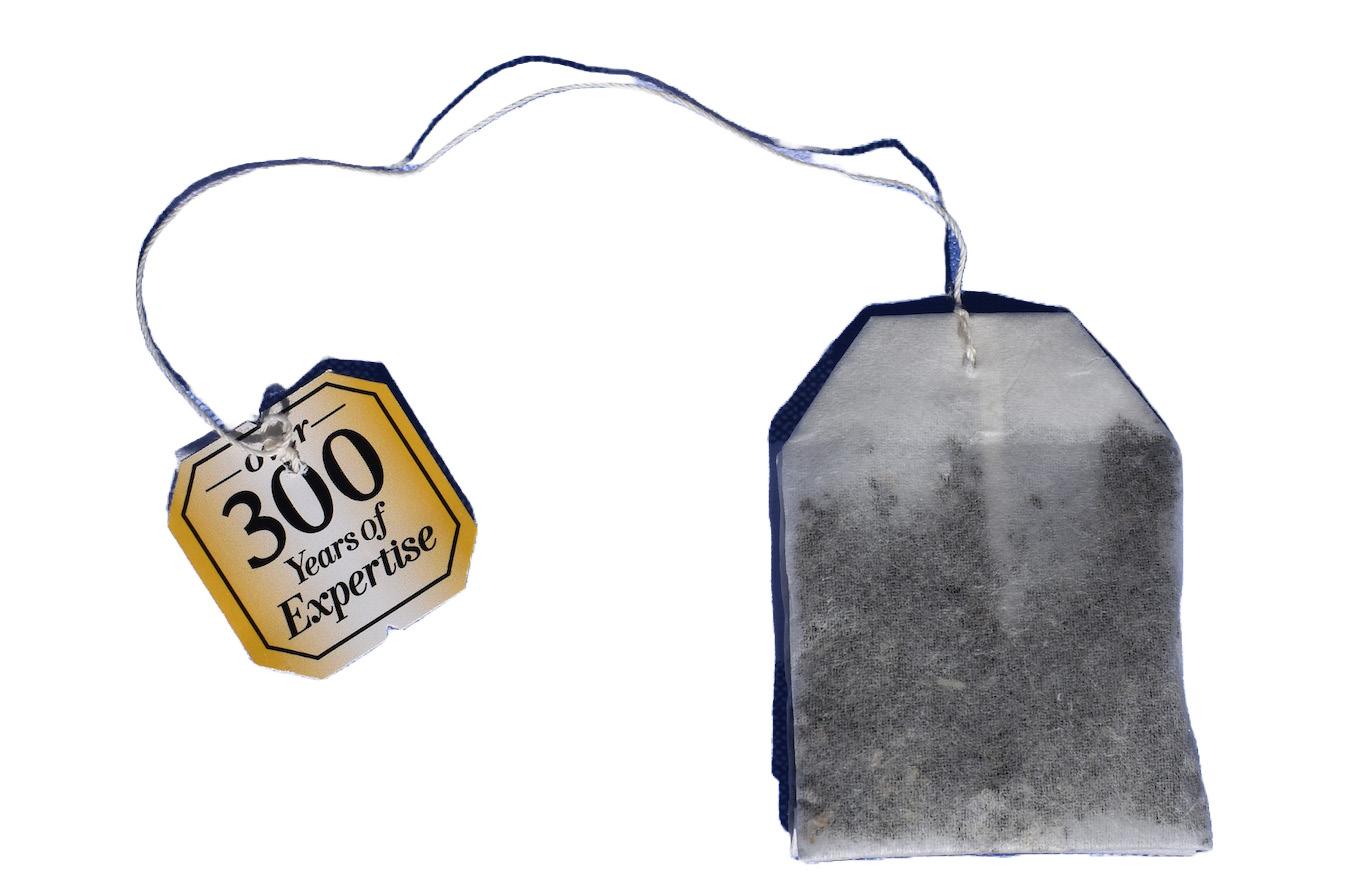
Orange Blossom & Ginger Iced Tea
- 2 cups of boiling water
- 2 teaspoons of loose-leaf black tea or - 2 black tea bags
- 1 tablespoon dried orange blossom petals (or 1 orange blossom tea bag)
- 1 small piece of fresh ginger (about 1-inch, thinly sliced)
- 1-2 tablespoons honey or agave syrup (optional)
- Ice cubes
- Orange slices(for garnish)

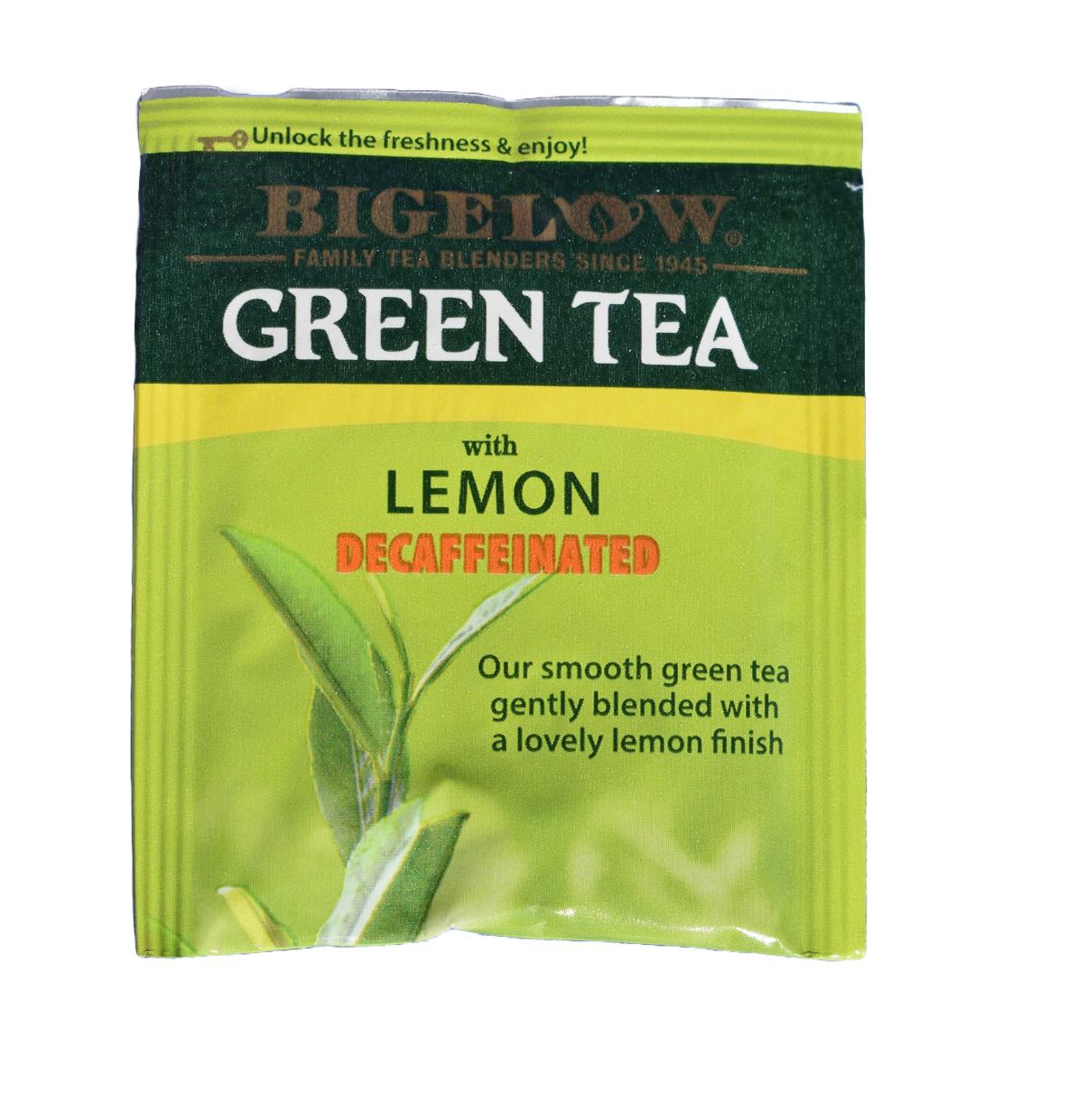
Hibiscus & Lime Sparkler
- 2 cups of boiling water
- 2 teaspoons of dried hibiscus flowers (or 2 hibiscus tea bags)
- 1 tablespoon agave syrup (or honey)
- 1/2 lime (juice)
- Sparkling water
- Ice cubes
- Lime wedges(for garnish
Jasmine Green Tea & Mint Cooler Recipe
- 2 cups of boiling water
- 2 teaspoons of loose-leaf jasmine green tea or 2 jasmine green tea bags
- 1 handful fresh mint leaves
- 1-2 teaspoons honey or agave syrup (optional)
- Ice cubes
- Lemon slices(for garnish)
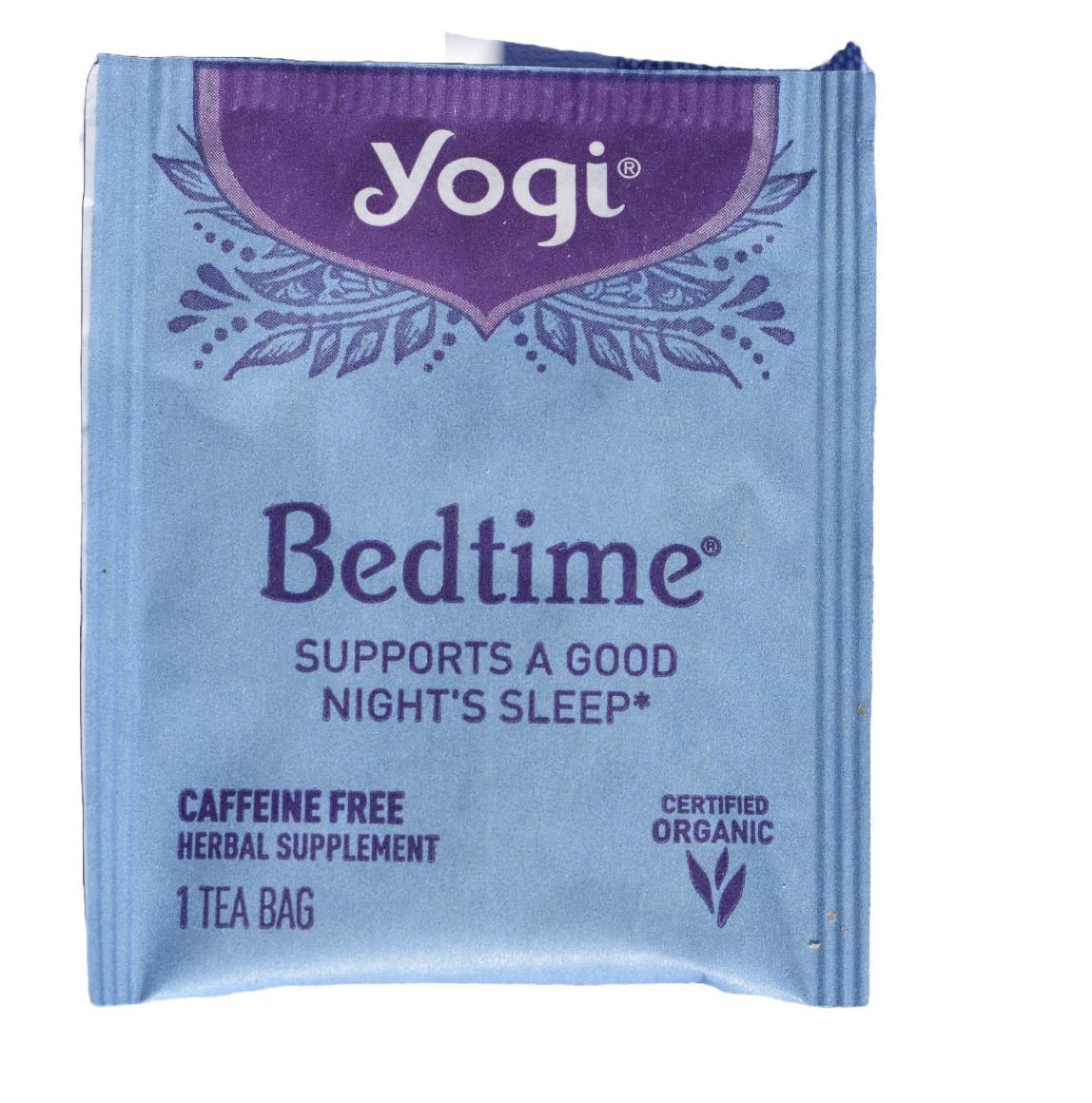
Chamomile & Lavender
Honey Latte
- 1 cup of water
- 1 chamomile tea bag
- 1/2 teaspoon dried lavender buds (or 1/2 lavender tea bag)
- 1 cup of milk (or dairy-free milk)
- 1 tablespoon honey (or sweetener of choice)
Rose and Vanilla
Chai Latte
- 1 cup of milk (or any dairy-free milk like almond, oat, or coconut)
- 1 cup of water
- 1 tablespoon rose petals (or 1 rose tea bag)
- 1 black tea bag (such as Assam or Darjeeling)
- 1/2 teaspoon ground cinnamon
- 1/4 teaspoon ground ginger
- 1/4 teaspoon ground cardamom
- 1 teaspoon vanilla extract
- 1 tablespoon honey or sweetner of choice
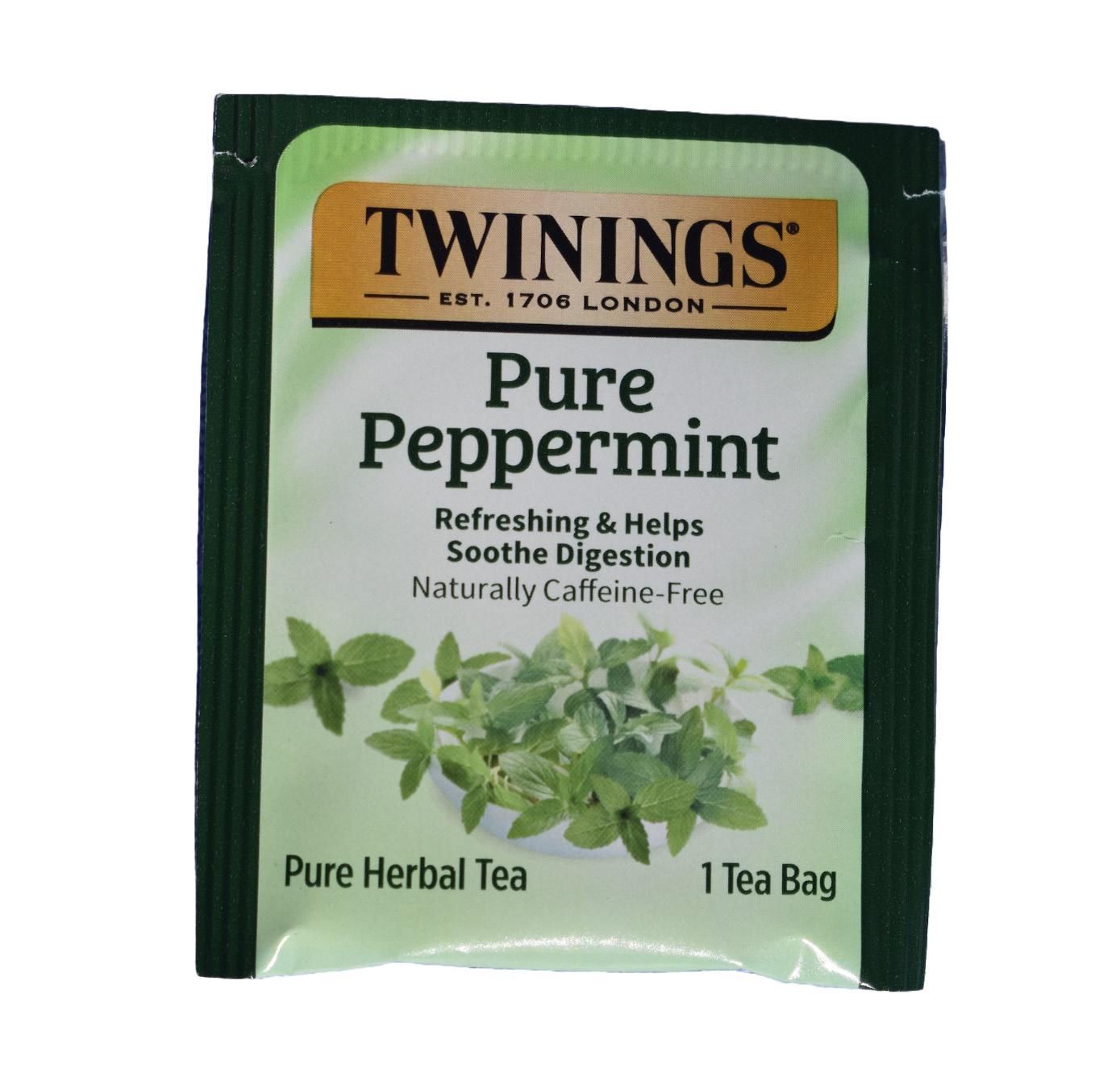

Flower and Focaccia
Words by: Adeline Kim
Pictures by: Alyssa Turay
There’s a word in Korean called son mat that describes the taste of something that was made by hand. Though I wasn’t much of a cook before COVID, I became infatuated with the world of “from scratch”, or foods made with pure ingredients. I wanted to achieve the son mat in some way, which eventually led me to the world of baking. I, like many others plagued by the boredom of lockdown, cycled through a plethora of random hobbies that I never would have considered before. Motivated by achieving this hand-made taste, baking became one of my more regular activities that stuck with me even after lockdown.
In order to create something with this very specific hand-made taste, I baked all kinds of breads, cupcakes, cookies, cinnamon rolls, and danishes almost every other night. Between the hours of 6:00 pm and 8:00 pm, I would take over my kitchen space, filling the house with the smell of yeast, covering the floor in gritty sugar, and dusting flour all over the kitchen counter. Though my family is particularly fond of sweet treats, my most requested and replicated dish I produced during this time was inexplicably my homemade focaccia.
With the exception of the widely controversial and tricky sourdough, bread is one of the easiest, yet most rewarding, baked goods I’ve made. At its most basic form, it is simply a combination of flour, yeast, water, and salt. Though focaccia requires a few additional ingredients, the process is just as simple, yielding a much more impressive bread. Even with some of my first failed attempts at baking the perfect loaf, my family would often still comment on how nice the house would smell, or even how good it felt to have anything homemade. Bread had always been a staple in our household, but it had become even more of a joy to have the freedom to have it made anytime completely from scratch.
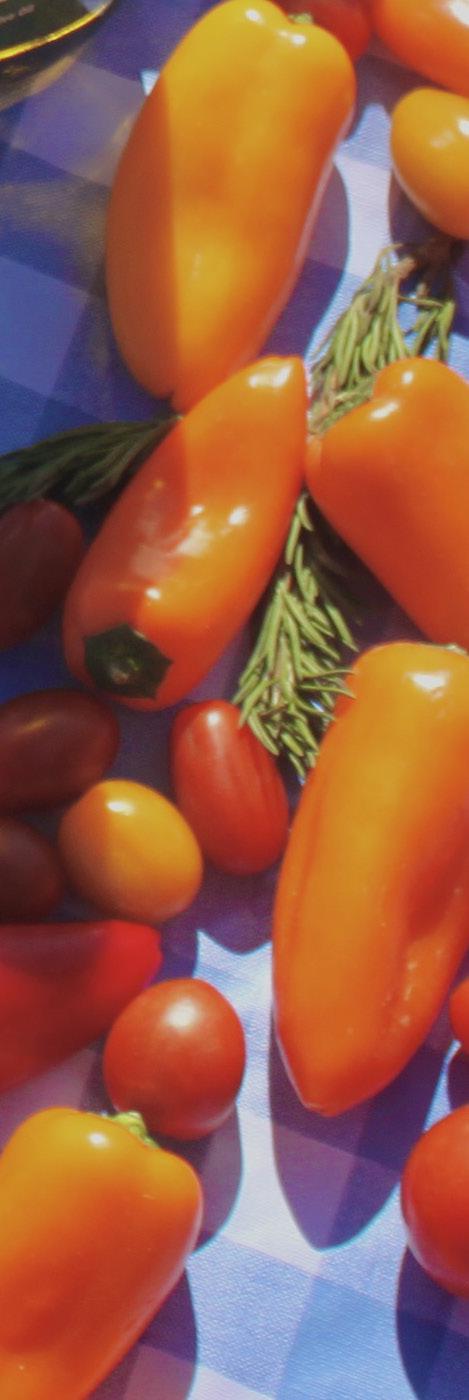

Sharing a warm loaf of bread together during this tumultuous and isolating time was a great bonding experience for my family. After being forced into close proximity for several months, baking became a creative outlet for me, a space where I could obsess over perfection, and feel control over every step. My siblings and I would take turns trying to outdo each other as we tried to make the perfect loaf. While my sister had the upper hand on patience and technique, I brought creativity by forming vegetables and herbs into unique designs on my loaves. One of my favorite designs included sliced cherry tomatoes as flower petals, thyme as stems, and thinly sliced red onion as leaves. Though it was competitive in nature, the act of baking and the togetherness in eating slowly began to repair any kind of hostility that had built up in my household due to the forced quarantine.
What I’ve realized through my baking journey is that son mat isn’t just simply the taste of the dish- instead, it’s an overarching feeling of love when consuming. The food only tastes as good as the effort put into it, which is why my family enjoyed even the flat, deflated versions of my focaccia before I got the technique down perfectly. Flour, as the building block of all baked goods made from scratch, is an ingredient that embodies this transformative period of time for me. Bread can curb hunger, but can also deeply nourish the soul of those who make it. I’ve found a newfound appreciation for food made from scratch now, and I hope to continue sharing this love and appreciation with others, one loaf at a time.

INGREDIENTS:
Bread:
2 teaspoons of sugar
1¾ cups of lukewarm water
2 ¼ teaspoons (1 packet) of active dry yeast
2 teaspoons of salt
6 tablespoons of extra virgin olive oil
4 cups of all purpose flour
Optional toppings:
Flakey sea salt
Sliced tomatoes
Rosemary Red onion
Bell peppers
Parmesan
DIRECTIONS:
1. Combine the sugar and water in a large mixing bowl, and stir until dissolved.
2. Bloom the yeast by sprinkling it over the surface of the water. Let it stand for 5 minutes, or until the yeast is bubbling and a foam coats the surface of the water.
3. Add salt and oil, and pour in flour gradually while mixing with a spatula (alternatively, you may use a stand mixer with a dough hook attachment).
4. Once combined, the texture of the dough should be sticky, but not wet. Adjust the texture accordingly with extra water, or flour.
5. Drizzle a thin layer of olive oil on the surface of the dough in order to prevent dryness. Cover the bowl in either a damp cloth or saran wrap, ensuring an airtight lid on the bowl.
6. Let the dough rise in a warm spot for 2-3 hours, or when doubled in size.
7. With oiled hands, dimple the dough, deflate and release it from the sides of the bowl. Move the dough from the bowl to an oiled, large, shallow, rectangular pan.
8. Spread the dough on the pan with the fingertips, indenting the surface with deep dimples. Let it rise to room temperature for 30 more minutes.
9. Prepare desired toppings. Get creative with the visual using bright colors and beautiful shapes with the vegetables and herbs!
10. Preheat the oven to 425°F and bake for 20-30 minutes, or until the surface is golden brown.
11. Cool, slice into squares and enjoy!

French Macarons
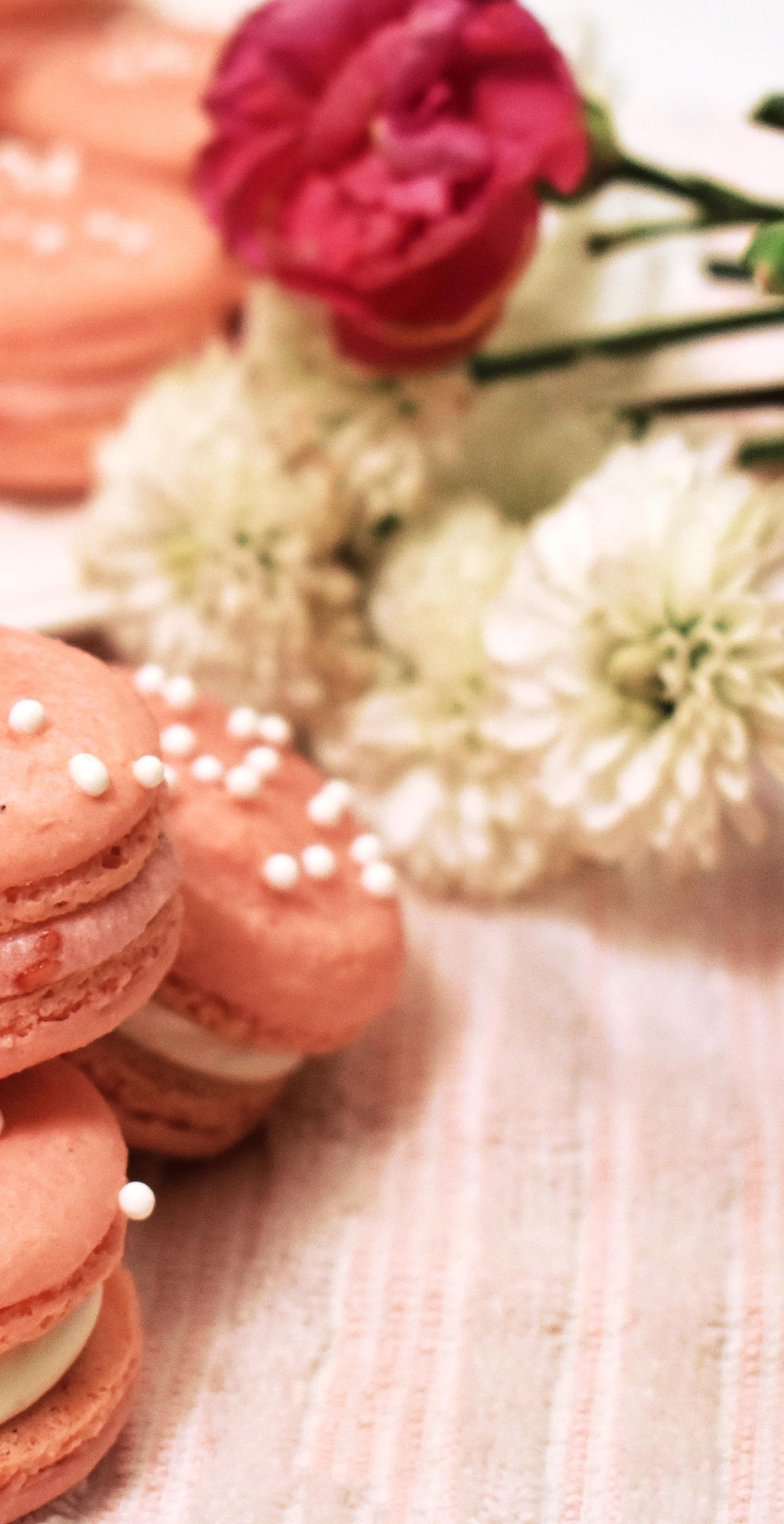
Regarded as one of the most difficult French confections, French macarons are just as finicky as they sound. Though it was over ten years ago, I can easily recall the first time I attempted to bake them (spoiler: they did not turn out well). I had just finished watching the finale of the Great British Bake Show and was inspired to attempt to make these delicate cookies. Seeing how it was the evening and no stores were open, I had to get creative. I scoured through the pantry and made my own almond flour by picking almonds out of a bag of trail mix and grinding them up. At the time, almond flour wasn’t a staple in my house. No wonder the macarons turned out wrong! In short, it took me a long time to get comfortable with making macarons and an even longer time to master them.
Traditionally, almond flour is used in macarons because of its superfine texture, balanced fat content, and lack of gluten, which gives the macarons their iconic crisp shells and chewy interiors. My hypothesis was that substituting almond flour with different flours would alter three variables: the macarons’ texture, structure, and flavor. To test this hypothesis, I prepared four batches of macarons, each with a different flour. The control batch used almond flour, the standard for classic macarons. The second batch incorporated coconut flour, a high-fiber, absorbent alternative. The third batch featured hazelnut flour, another nut-based flour with a higher fat composition. The final batch was made with oat flour, a gluten-free flour alternative with a different starch content. To ensure consistency, all variables besides the type of flour remained unchanged. The recipe ratios were identical across all batches, using the same weight of flour, sugar, and egg whites. The mixing technique followed the same tedious process, while baking time and temperature were constant across the board. To ensure a “skin” had formed on the batter, the resting time before baking was set at one hour across all batches of cookies.
An Experiment in Flour
Words and Pictures by: Hannah Phillips
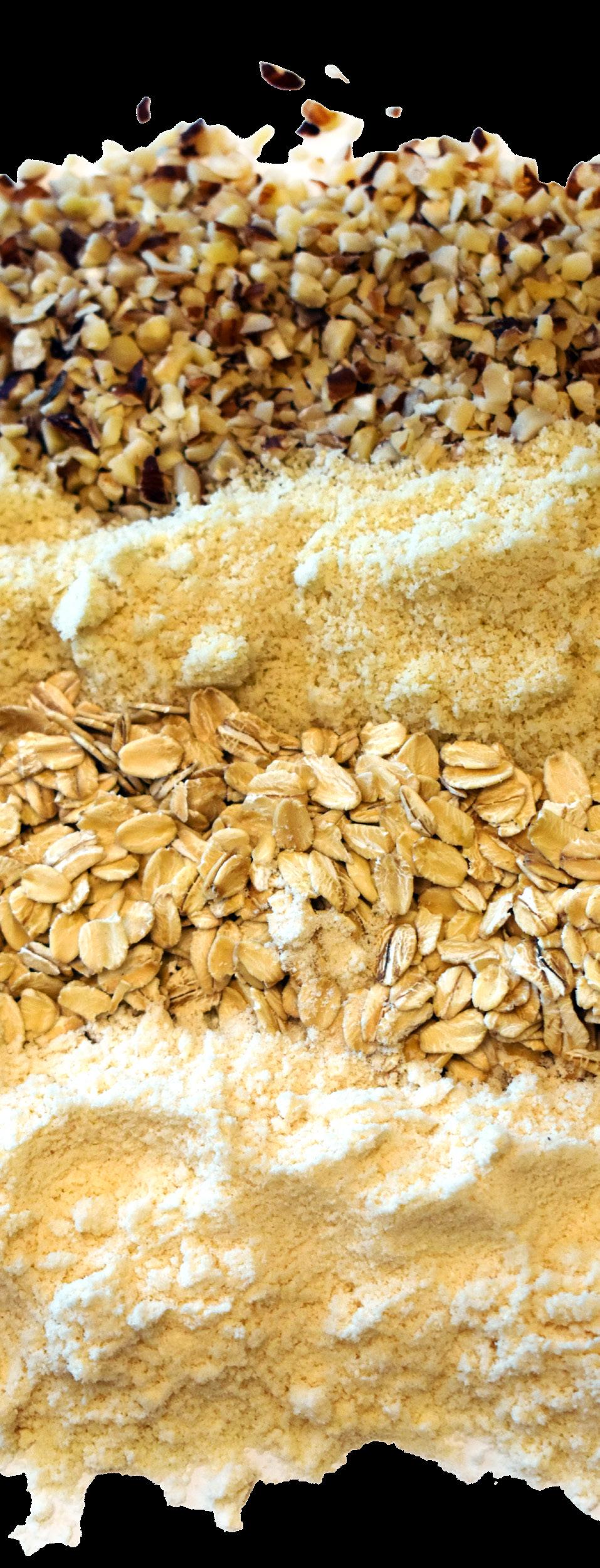
As expected, the control batch (made with almond flour) produced picture-perfect macarons with a crisp smooth shell and a chewy interior. Because the batter was the perfect lava-like consistency, it allowed the macarons to spread and develop their signature “feet.”
The coconut flour absorbed a lot more moisture, resulting in a thick cookie dough like consistency, making it hard to pipe into circles. As a result, the macarons were tacky and didn’t form a hard shell. Coconut flour has a high fiber content which could explain why the cookies were sticky and dense. The taste of the finished cookie was coconutty and sweet,but very far off from a macaron. Maybe it’s best if coconut is just used in macaroons.
The hazelnut flour was the most similar to almond flour, but it produced slightly rougher shells. Hazelnuts have a higher oil content than almonds, which explains why the batter was thinner, most likely causing a less uniform rise. However, the rich nutty flavor provided a promising variation, especially when paired with chocolate. astly, the oat flour batch spread more during baking,resulting in flatter macarons with minimal feet.
Oat flour has a high starch content, which contributed to the cookies’ slightly chewy texture, but because of its lower protein and fat content, it made the final cookies weaker in structure. The flavor was slightly sweet and hearty, almost like an oatmeal cream pie, which worked well with certain fillings but was noticeably different from the rest of the nut flour based batches. I found that almond flour remains the best and most consistent option, but with a few twists and tweaks, hazelnut flour seems to be the only other flour that can be successfully incorporated with slight adjustments to my basic french macaron recipe.
After all this experimenting, I was again reminded of my childhood experiences with french macarons — the messy kitchens, the failed batches, and the joy and satisfaction of finally getting the recipe right. Even though my first macarons were a complete disaster, they sparked my constant curiosity about the science of baking. Whether you stick to tradition or test new variations, the key to successful macarons lies in their precision and playfulness. So if you’ve ever been intimidated by these tiny cookies, now is the time to rise up off your feet and get experimenting!
Ingredients:
150g almond flour (or 110g almond flour and 40g hazelnut flour)
150g powdered sugar
100g superfine sugar
110g egg whites (room temperature, around 3-4 eggs)
1/4 tsp cream of tartar
Gel food coloring (optional)
Filling of your choice (buttercream, ganache, jam, etc.)
1. Prepare the Dry Ingredients:
In a food processor, pulse together the almond flour and powdered sugar until finely combined. Transfer to a medium-sized bowl and sift the mixture twice to remove any clumps.
2. Make the Meringue:
In a clean, dry, and chilled mixing bowl, beat the roomtemperature egg whites with an electric mixer on medium speed until foamy (about 30 seconds). Add the cream of tartar and continue beating on medium speed for another 30 seconds (It’s okay if the cream of tartar isn’t fully dissolved). With the mixer on medium-high speed, gradually add the superfine sugar one tablespoon at a time, waiting about 30 seconds between each addition.(Optional: Add gel food coloring after all sugar has been incorporated.) Continue beating until stiff, glossy peaks form.
3. Fold the Dry Ingredients into the Meringue (Macaronage): Add the sifted almond flour mixture to the meringue.Using a spatula, fold gently in sweeping motions—scraping down the sides and bottom of the bowl, cutting through the center, and turning the bowl as you go. Continue folding until the batter flows smoothly and falls from the spatula in a continuous ribbon. You should be able to make a figure-8 with the batter, and it should hold its shape for a few seconds before sinking back.
4. Pipe the Macarons: Transfer the batter into a large pastry bag fitted with a wide round tip. (Tip: Place a small piece of tape over the tip to prevent batter from spilling out before piping). Pipe batter onto parchment-lined baking sheets, holding the bag straight up and down. Pipe 1 ½” circles, then release pressure with a slight “C” motion to avoid peaks. Leave space between each macaron. Tap the baking sheet firmly 5-6 times on the counter to release air bubbles. Let the macarons sit at room temperature for 1 hour, or until a dry “skin” forms on the surface.
5. Bake the Macarons: Bake the macarons for 10 minutes at 315°F , rotating the baking sheet halfway through for even baking.
6. Cool & Fill: Allow the macaron shells to cool completely before carefully removing them from the parchment paper. Fill with your favorite buttercream or ganache.


Website: bcgusto.com
Email: bcgustomag@gmail.com
